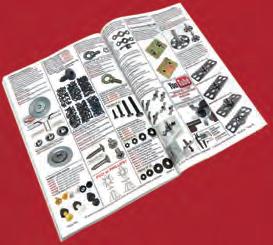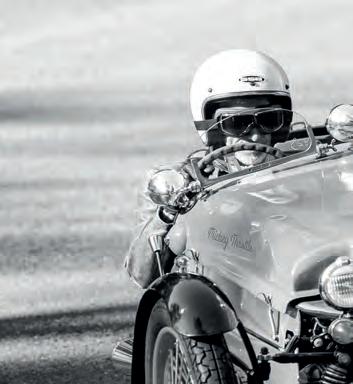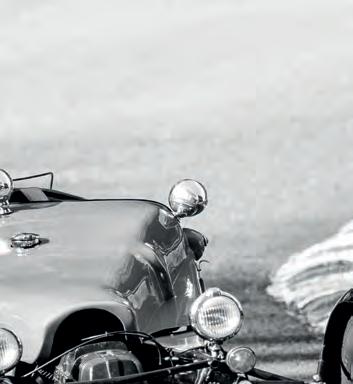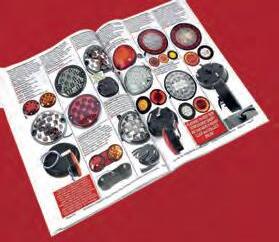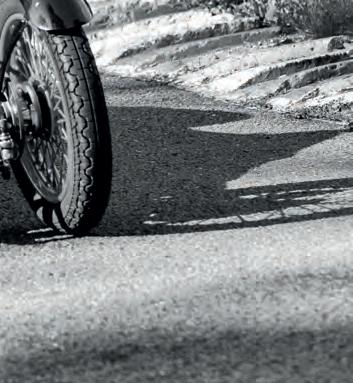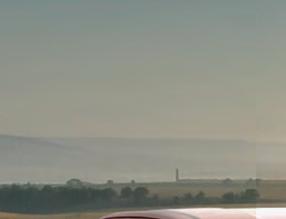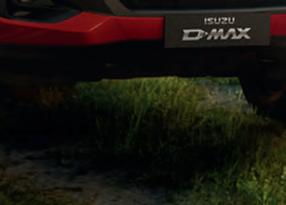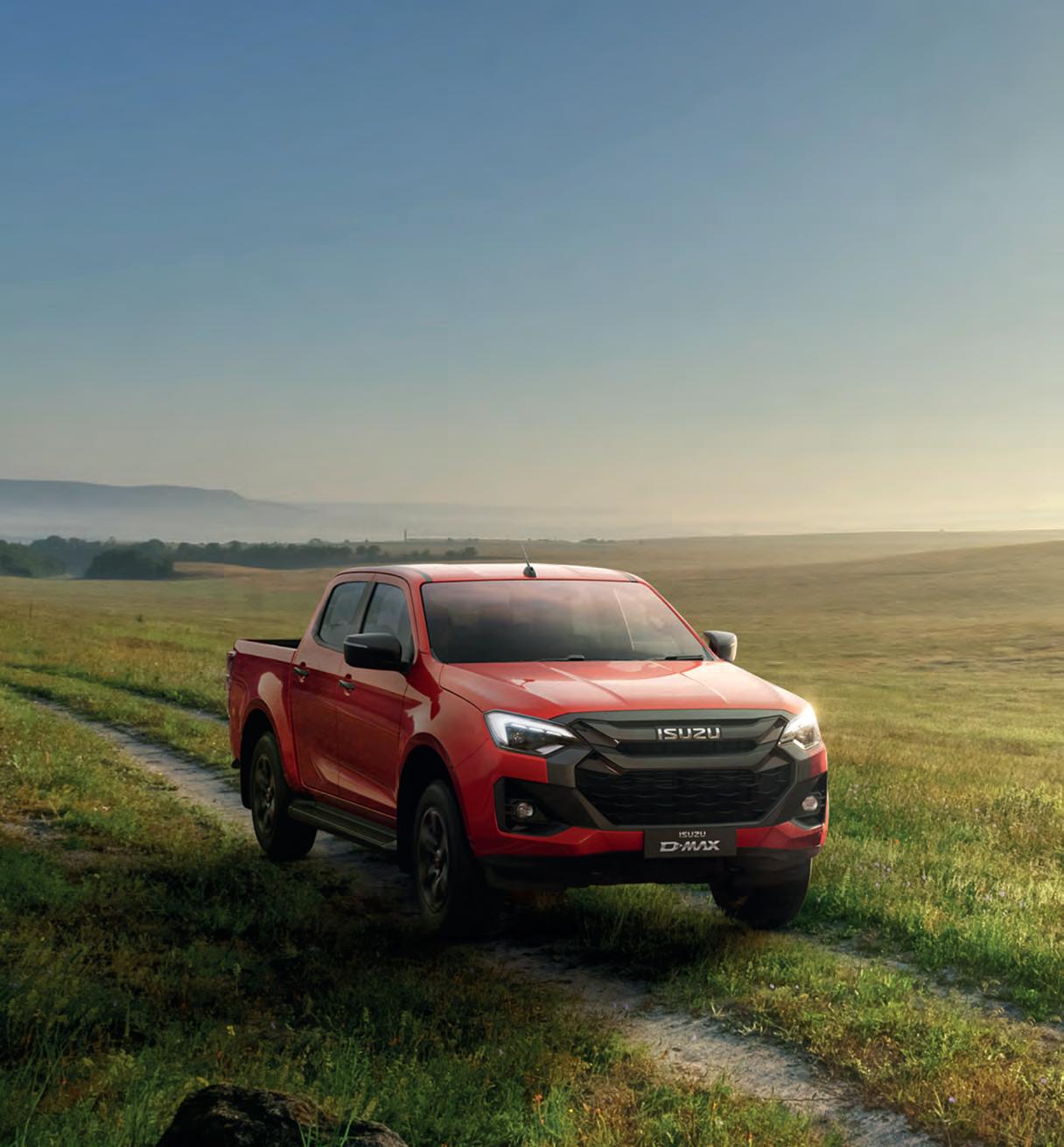
















ROADBOOK Exploring the wide open lanes and trails of the North York Moors





















ROADBOOK Exploring the wide open lanes and trails of the North York Moors











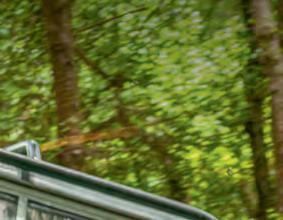

Could a budget challenge truck from the early days of winch competition provide an antidote to the modern era of megabuck competition cars?



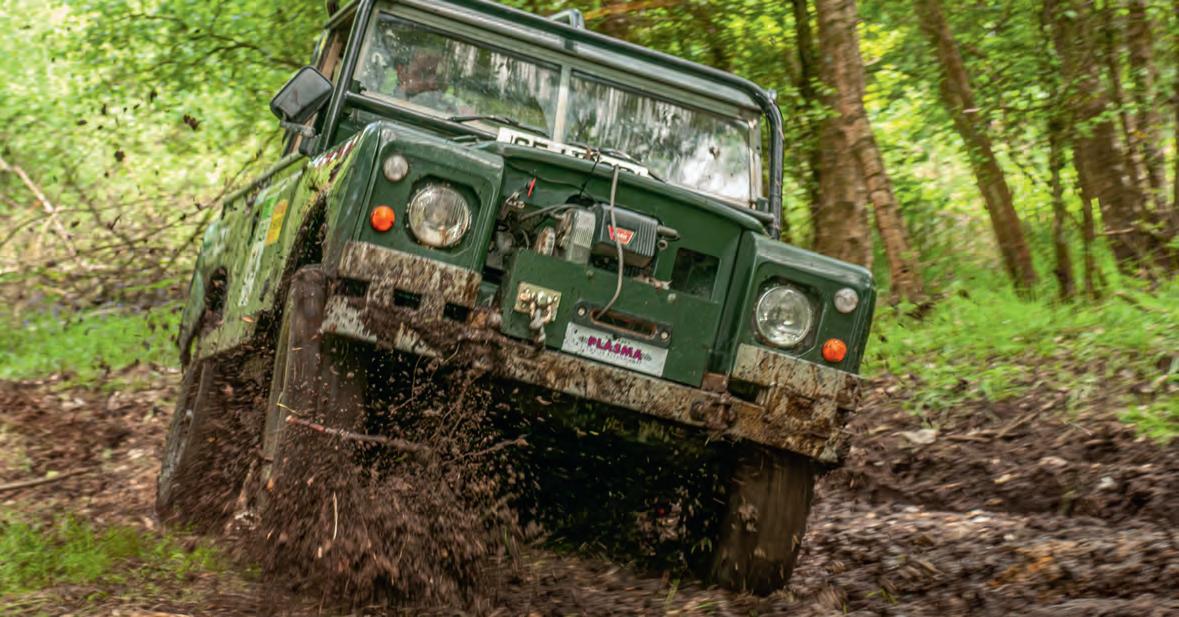

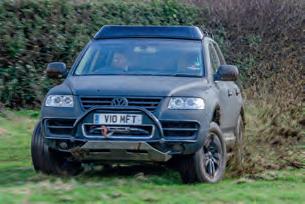
Dare to be different? How about an off-road

The
route

Engineered to improve mud traction


Formulated to improve wet traction, KO3 stops 4.2 shorter than the KO2 ▐ Designed to maximize handling and traction on- and off-road by stabilizing the tread center and providing biting edges for off-road traction


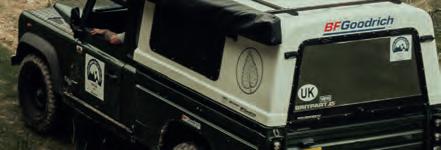
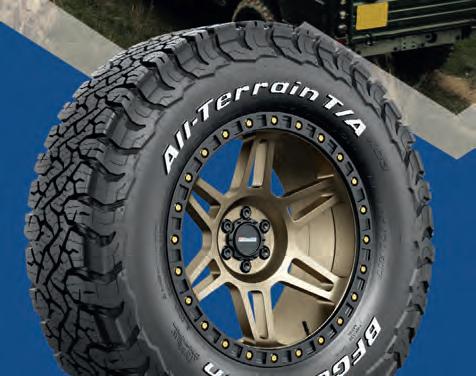





TF975 Roof Rack
TF1707 2.5m Hard Case LED Awning
TF1731 LED Shower Awning
TF705 Spot Lights
TF1038 Raised Air Intake
TF7220 Bulk Head Light Brackets
TF7116 Lights
TF31038 Halo & Bar Indicator & Side Light
TF7112 Halo & Bar LED Headlights
TF31011 Dynamic Side Repeaters
TF270 Grille & Headlight Surround
TF0028 TRED Winch Bumper
TF3360 12,500lb Twin Motor Winch with 50m Synthetic Rope
TF0017 Steering Guard
TF844 Front Diff Guard
TF662
TF667
TF488 2.5” Competition 8 Stage 12” Travel Remote Reservoir Shock Absorber
TF545 Mounting Kit
TF542 / TF544 / TF140 Bump Stops
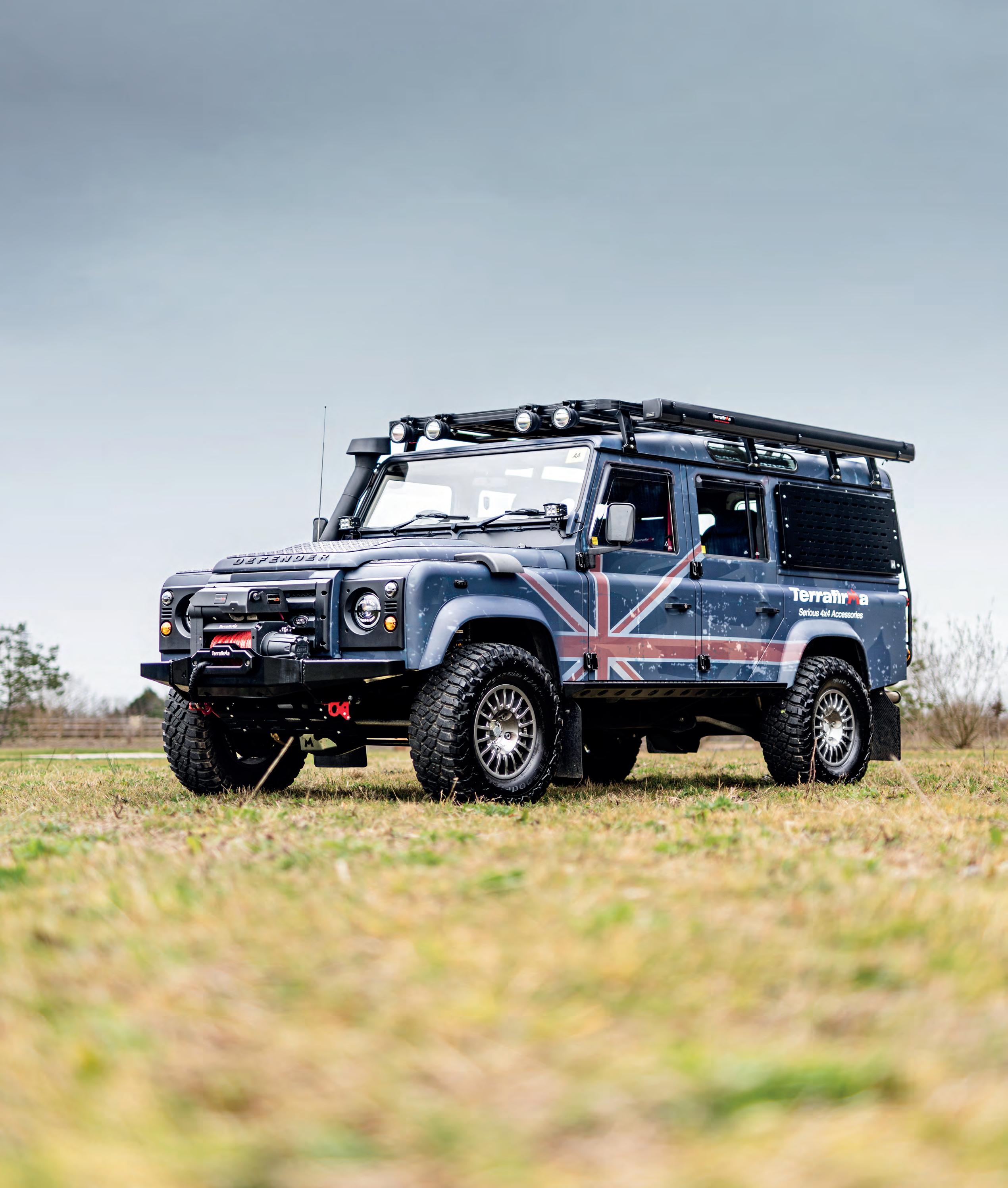
Wind Deflectors
Wind Deflectors
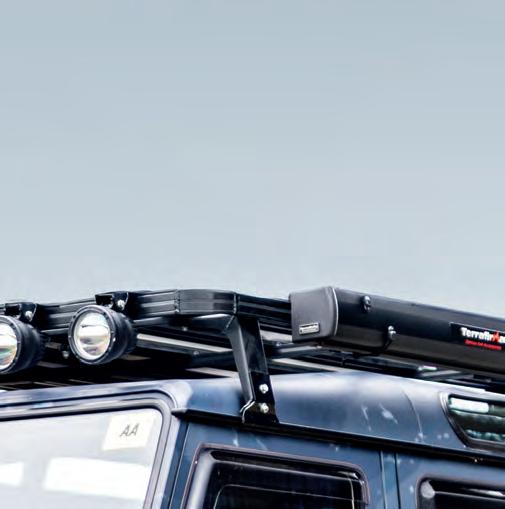
TF979 Flip Up Window
TF979BIN Internal Storage Bin
TF978 Fold Down Shelf
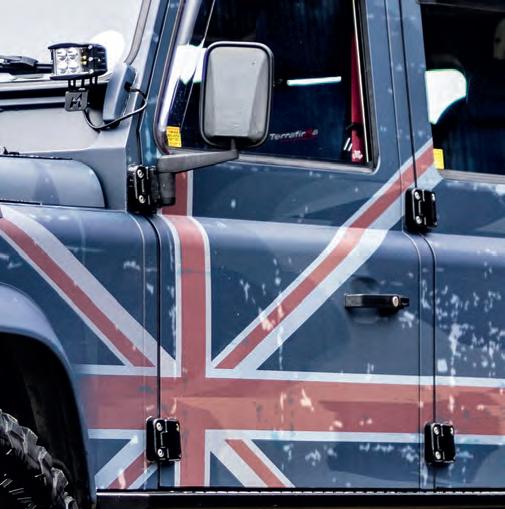
TF301 30mm Wheel Spacers
TF161G Winrace Aluminium Wheels


TF051 Swingaway Spare Wheel Carrier
TF980 Rear Ladder

TF686 Big Brake Upgrade Front / Rear
TF645GD Stainless Steel +2” Braided Hose Kit

TF3010B Front Mudflap Brackets
TF3012B Rear Mudflap Brackets

range of Terrafirma Defender parts designed to enhance your journey.
Tel: 01283 742969
Email: admin@pistonpublications.co.uk

Web: www.totaloffroad.co.uk www.4x4i.com
Online Shop: www.toronline.co.uk
Facebook: www.facebook.com/totaloffroad www.facebook.com/4x4Mag
Editor Alan Kidd
Design Ian Denby-Jones
Contributors
Jmes Webber, Gary Martin, Olly Sack, Dan Fenn, Gary Noskill, Paul Looe, Mark Fraser, Kenny Tucker, Tom Alderney, Tushar and Pooja Agarwal
Photographers
Steve Taylor, Richard Hair, Vic Peel, Harry Hamm
Advertising Sales
Colin Ashworth
Tel: 01283 742969 isabelle@tandemmedia.co.uk
Subscriptions Agency
WW Magazines, 151 Station Street, Burton on Trent, DE14 1BG Tel: 01283 742970
Publisher Alan Kidd
Email: editorial@pistonpublications.co.uk
To subscribe to 4x4, or renew a subscription, call 01283 742970. Prices for 12 issues: UK £42 (24 issues £76); Europe Airmail/ROW Surface £54; ROW Airmail £78
Distributed by Marketforce; www.marketforce.co.uk
Every effort is made to ensure the contents of 4x4 are accurate, but Piston Publications accepts no responsibility for errors or omissions nor the consequences of actions made as a result of these. When responding to any advert in 4x4, you should make appropriate enquiries before sending money or entering into a contract. The publishers take reasonable care to ensure advertisers’ probity, but will not be liable for loss or damage incurred from responding to adverts
Where a photo credit includes the note ‘CC BY 2.0’ or similar, the image is made available under that Creative Commons licence: details at www.creativecommons.org
Overlander 4x4 is published by Piston Publications Ltd, PO Box 8830, Burton on Trent DE14 9QW
© Piston Publications Ltd, 2025

overlander4x4.co.uk



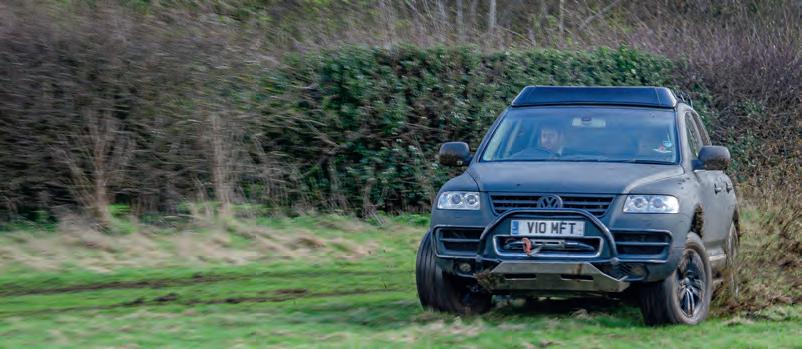

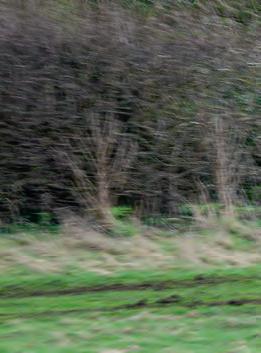






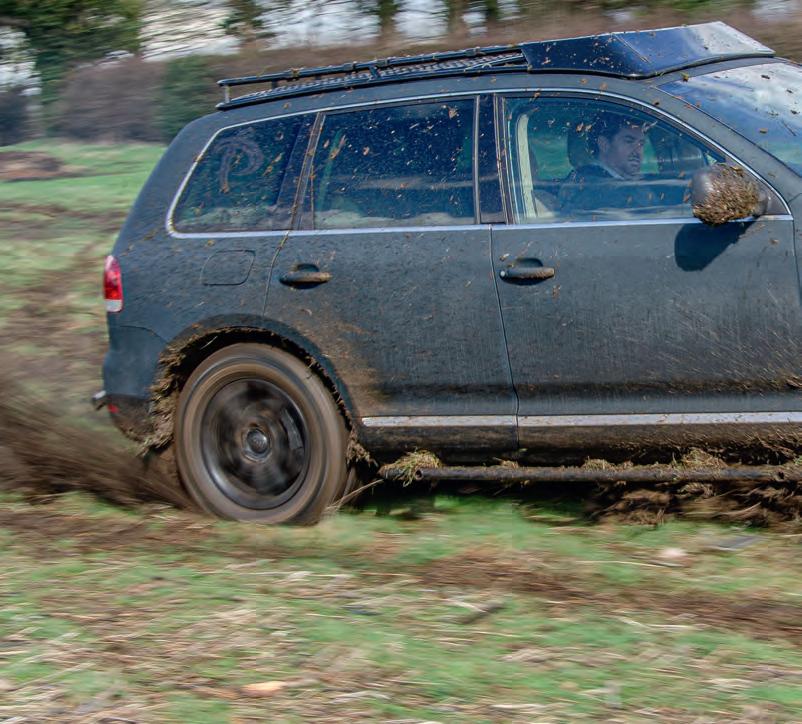

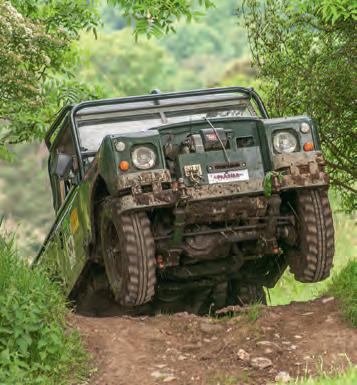













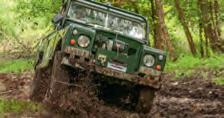










Pay quarterly by direct debit and you can get Britain’s only all-marques 4x4 magazine delivered to your door – for less than half the price on the front cover!





4 News
Isuzu sticks it to the tax man with a new top-spec commercial version of the D-Max. Land Rover unveils the shortlist for its Defender Awards initiative and Toyota lifts the lid on the latest off-road masterpiece you badly want but can’t have
13 Rights of Way
The byways around Stonehenge finally reopen after about a thousand years – but there’s no room for complacency anywhere on the Plain
14 Products
Top-spec roof racks for the Grenadier, budget lifts for the Mk3 Shogun and OE alloys on clearance for the Freelander 1


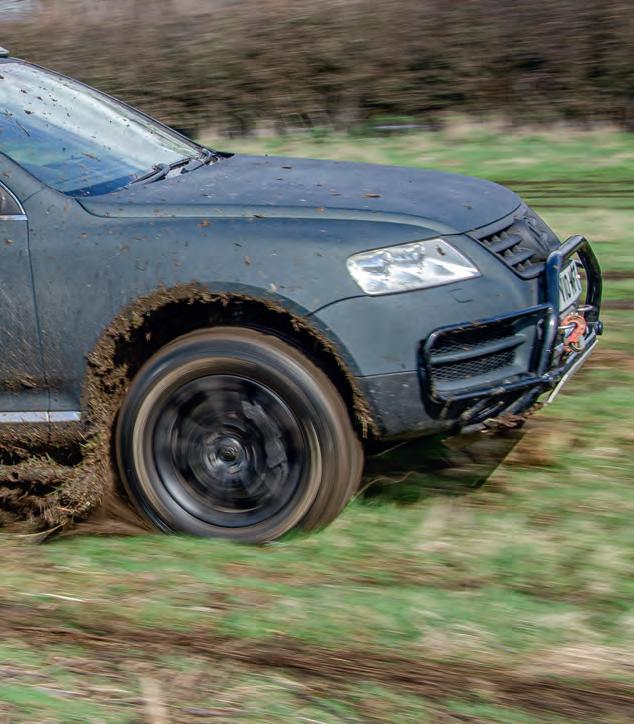

26 Subscribe
Get Overlander 4x4 delivered for a fraction of the cover price
64 Next Month
Eyes down for an epic green lane route in the mountains of Mid-Wales, and an array of superb off-roaders to pore over
16 Lexus LBX Takumi
The brilliant little premium SUV blew us away this summer – is it even better in high-spec form?
18 Monster Touareg
Its 5.0-litre V10 diesel engine made it famous, but the Volkswagen Touareg was never an obvious choice for an off-road build. There’s the kind of person who sees that as a challenge…
28 No-Frills Winch Landy
Competitive winching quickly became a game for big-budget teams in purpose-built special vehicles. But there was a time when you could still hold your own in a leaf-sprung Land Rover
36 Family Amarok
A modified 4x4 built by a couple who came at it not as off-roader but traditional Volkswagen fans
42 Overland to India: Part 1
The normal way to get from London to Delhi would involve dragging a suitcase around Heathrow. But where’s the fun in that when you could buy a Jeep Cherokee and drive there instead?
52 ROADBOOK North York Moors
Join us for a mighty run out on one of the best sets of green lanes anywhere in the country






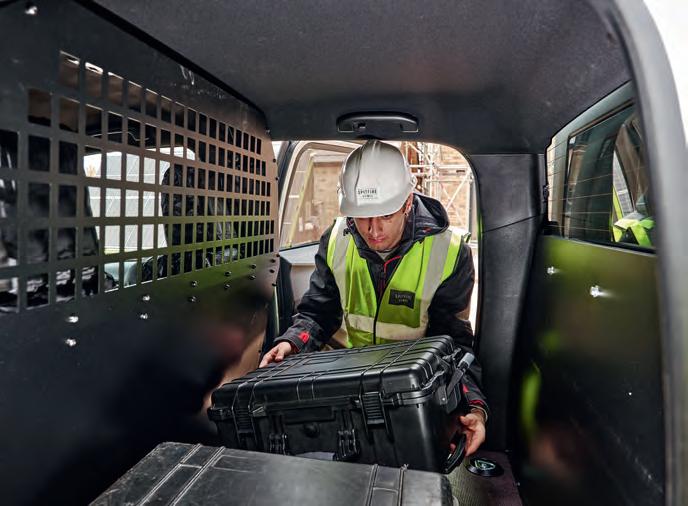
Ever since lifestyle pick-up trucks were invented, the market has been divided in two. There are posh trucks and there are work trucks; posh ones can still do a job of work but work trucks are commercially focused to the exclusion of everything else.
If anyone was going to turn that on its head, you’d put money on it being Isuzu. And sure enough, the company’s UK importer has come up with the D-Max V-Cross Commercial – a premiumspec model that’s been turned into
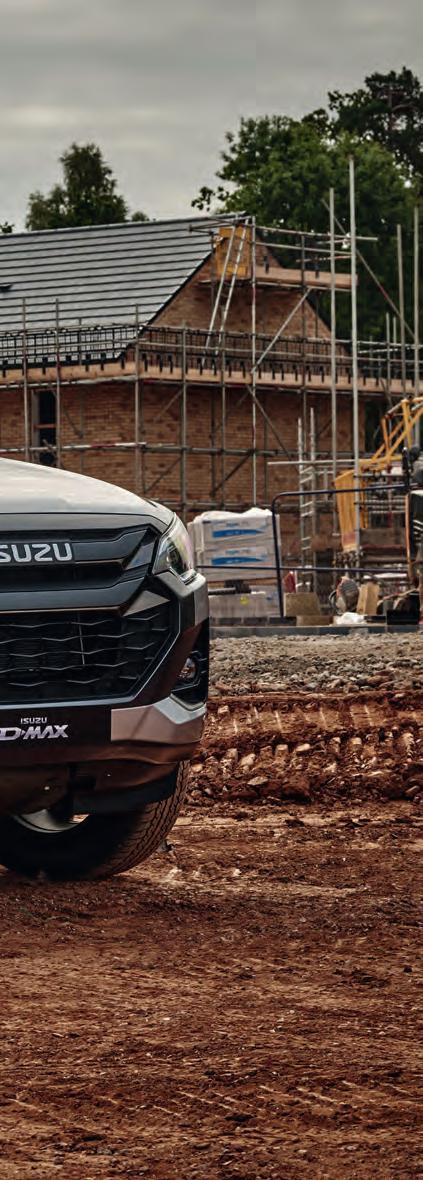
a two-seater for small businesses, farmers, tradespeople and construction professionals.
And so the fightback against 2025’s new double-cab tax regime begins with the first commercial vehicle turned into a lifestyle vehicle turned back into a commercial vehicle again. With a permanent cabin conversion into a secure load area, the V-Cross Commercial may be a four-door but it’s a two-seater – allowing it to thumb its nose at the tax man. It’s VAT reclaimable and attracts

a flat-rate £4020 for Benefits-in-Kind, as well as qualifying for a 100% Plant and Machinery Allowance.
The phrase ‘up yours’ comes to mind.
Obviously, the lack of any rear seating means this is not going to be much use as a family vehicle. But for owners who wanted extra cab space for things other than people, it means you can now have it without some creep in a bowler hat sneaking up behind you and setting your trousers on fire.
The rear load area has a heavy-duty flat floor and steel bulkheads both behind the front seats and at the back of the cab. The windows in the rear doors are heavily tinted to keep what’s behind them in the dark and the floor is fitted with four stout lashing eyes.
In the back, you get a lightweight commercial canopy whose top-hinged sides and rear open wide on gas struts to provide easy access to the load bed, which is fitted with a heavy-duty liner. A tow bar and electrics come as standard, as do water-resistant driver and passenger seat covers.
So it’s a tool of work. We understand that. And a jolly impressive one, too. But it’s also a D-Max V-Cross, with all that this
brings – which is plenty. There’s all the gunmetal styling upgrades, for starters, in lieu of chrome – which is probably better suited to a truck that’s going to be earning its living in forests and building sites anyway, even if this is a little bit of a happy accident in this case.
The V-Cross is the range-topping D-Max in every other way, too, with all the premium features Isuzu has to offer. All the safety kit, too, which is no small thing when being in business means filling out those endless duty-of-care forms you keep being given by Kylie the H&S manager.
You get alloy wheels, LED headlamps, adaptive cruise control, front and rear parking sensors, reversing camera, leather upholstery, dual-zone climate, USB
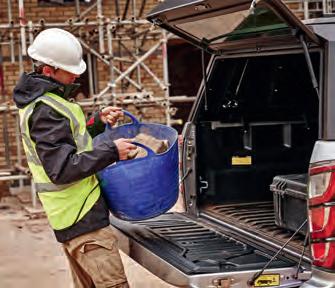

charging ports and a 9” media system with wireless Apple CarPlay and Android Auto, as well as Isuzu’s latest 7” digital dash.
Even a luxuried-up D-Max is still a D-Max first and foremost, however, and that means it’s as capable as ever off-road. Which, as regular readers will know, is very capable indeed. It comes with a rear locker as standard, which can be a game-changer in a pick-up; automatic transmission is included in the price too, as is the dual-range transfer box behind it, and as with the rest of the current D-Max range there’s a Rough Terrain mode working away in the background. We’ve driven vehicles on which the ‘off-road’ button doesn’t seem to do much apart from turning on an ‘off-road’ light on the dash, but we’ve driven the latest D-Max in seriously challenging conditions and it does make a clear difference to the vehicle’s ability to find traction when you think all must be lost.
All is not lost, anyway, including the money you would otherwise be seeing the back of every month on your payslip. Neither is any vestige of peace of mind, with a five-year/125,000-mile warranty backed up by five years’ UK and European roadside assistance to look after you, and with a kerb weight of less than 2040kg it may be a commercial vehicle but you’re subject to the same speed limits as your mate in his Range Rover. On the subject of which, Isuzu owners regularly wax lyrical about their vehicles’ bomb-proof reliability and the excellent service they get when they take it in to their main dealer.
‘We’ve listened closely to feedback from our loyal customer base, who told us they wanted all the key attributes of a rugged 4x4 pick-up combined with the premium features of our flagship model,’ says Isuzu UK boss Alan Able. ‘The V-Cross Commercial delivers exactly that while also ensuring it is built as a serious, permanent commercial vehicle that businesses can rely on with confidence and make use of the commercial vehicle benefits.’
Which leaves just one question. Oh, two, actually. The first answer is that you can get the V-Cross Commercial in all the same colours as the standard double-cab model – a total of eight, including various mica, metallic and pearlescent options.
The second is that it’ll cost you £41,995 on the road. Ah yes, and the third, that’s
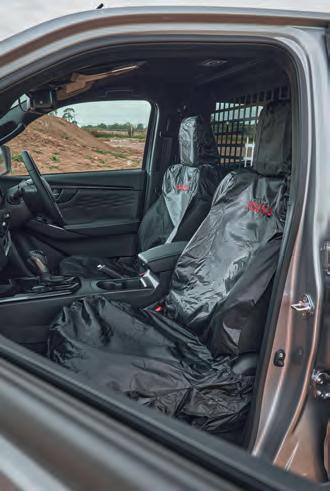

plus VAT. But if you’re buying a commercial vehicle, you’re going to be able to claim that back, aren’t you? Not far short of £4000 more than the standard V-Cross does sound a bit mad, but even with less seating capacity a lot has gone in to making this truck what it is – and if you’re a real-deal commercial user, it won’t be long before you’ve made that money back on it and more besides.
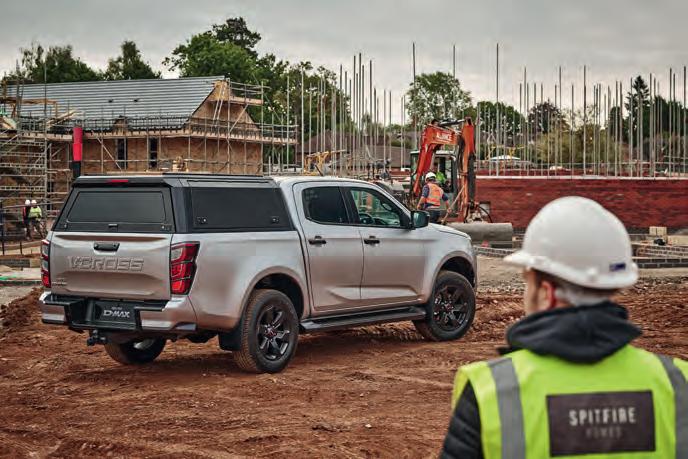
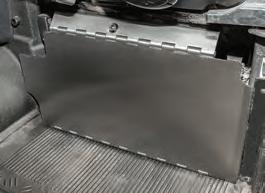
The X-Defend Pedal Lock secures the clutch, brake, and throttle, making the vehicle virtually undriveable. Unlike removable locks, it’s bolted to the floor and folds flat when not in use, doubling as part of the cab floor under your usual mat. This built-in design eliminates bulky storage, improves safety, and allows quick, easy locking — just release the catch and secure it in place.
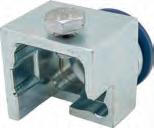
One thing that is common to virtually all stolen Land Rovers is that the column steering lock has been broken. It is normally broken by removing the lock barrel as this is surprisingly quick - the vehicle can then often be started with a screwdriver. This neat solution is a sleeve for the lock barrel assembly machined out of steel. It is strong enough to prevent the barrel being removed or the end broken o . The best thing about this solution is it’s completely passive - i.e. nothing to lock or unlock. It stays permanently fitted to the vehicle providing 24 hour protection and deterrent value. The column lock will fit all Defenders LHD or RHD - up to 2014, including Puma/Tdci. One exception is that some ex-military vehicles do not have a steering lock. While the column lock will fit - it serves no purpose as there is nothing for it to protect.
The International Security Register (ISR) system has proved successful in deterring and detecting theft and fraud for over 30 years. It works on the principle that if a vehicle’s windows and parts are marked using robust techniques and details are recorded on a secure database - supported by a 24/7 verification service - criminals stealing the vehicle will run a real risk of being caught and prosecuted. Each mark applied to a vehicle will contain a unique 8-digit code, the ISR logo and www.isrcodecheck.com
Pack Components

Full instructions on marking and registering a Land Rover are in the security marking kit.
8 vinyl stencils, fluid and brush for marking windows.
2 warning decals.
2 sets of 6 UV self-etch labels for application to painted metal body panels.
2 sets of 7 ultra-destruct labels with UV fluid and applicator for identifying plastic parts.
A set of three Britpart branded security tags for increasing the chance of items that are so often mislaid, being returned to the owner.
A Britpart branded ISR customer contact card.

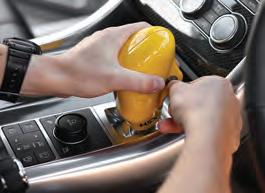







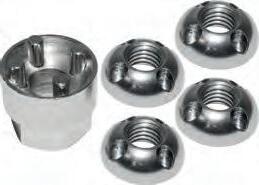










Land Rover’s Defender Awards initiative, which supports small charities and non-profit organisations working on local humanitarian and conservation projects, was launched in the middle of 2025 with the promise of a Defender, a £100,000 bursary and expert mentorship for each of winner chosen from seven countries around the world.
Since then, a selection process has been underway behind the scenes – and
this has now yielded a shortlist of 56 projects from around the world. Working in a huge variety of areas, these fit into the awards’ four categories – named Defenders of the Land, Defenders of the Sea, Defenders of the Wild and Defenders of Humanity. Among the shortlisted initiatives are those providing disaster relief, protecting endangered species, raising awareness of local health risks and tackling issues including poverty, violence and suicide.
Nations included in the scope of the awards are the UK, France, Germany, Italy, Australia, Japan and South Africa.
The shortlisted projects will be assessed by a judging panel co-chaired by Defender boss Mark Cameron and Dr Moreangels Mbizah, a Zimbabwean conservation biologist and founder of Wildlife Conservation Action. Among the judges are German adventure and landscape photographer Max Münch; Swiss explorer and environmentalist Bertrand Piccard; Italian actress and UNICEF Goodwill Ambassador Alessandra Mastronardi; Australian TV presenter and National Geographic film maker Tyson
Mayr; and Michiaki Matsushima, Editorial Director of WIRED Japan.
Shortlisted initiatives include:
Defenders of the Land: Fondazione Sylva, an organisation in South-East Italy which regenerates abandoned or Mafiaconfiscated land and transforms it into forests for native species to enhance biodiversity, improve air quality and mitigate climate change; Next Commons Lab, a Japanese initiative treating forests, rivers, landscapes and seas as interconnected common areas to be regenerated and sustained, whose pilot site in Owase City has already shown great success; and the Kinshizen Forest Creation Association Seedling Bank, which, using natural processes, store seedlings to create and safeguard future forests.
Defenders of the Wild: Restoring Upland Nature, a programme aiming to return the Golden Eagle to the skies over Britain using a combination of cutting-edge conservation science and hands-on engagement while working with landowners, gamekeepers, schools and community groups; and the African Pangolin Working Group, dedicated to



the treatment and rehabilitation of the vulnerable Temminck’s Pangolin which is hunted for its meat and scales.
Defenders of Humanity: Project Check Mate, which brings early detection services to the people most at risk of skin cancer in Australia – where rates are 12 times the global average; ReAct, whose volunteers provide drone-assisted monitoring and search and rescue services to vulnerable communities hit by natural disasters; and Sapocycle, which provides meaningful work for people with disabilities in Germany through taking an innovative approach to waste reduction by recycling used hotel soaps.
Defenders of the Sea: BlueHeart, also in Germany, which raises awareness of and fosters empathy for environmental issues such as plastic pollution and over-fishing; Women in Ocean Science, a UK initiative focused on empowering the next generation of female ocean leaders by delivering marine research, restoration and outreach through a trio of women-led coastal expeditions; and the Blue Carbon Gardeners project in Corsica, France, whose goal is to restore underwater forests responsible for carbon sequestration using an innovative method of transplanting natural Posidonia seagrass cuttings using biodegradable staples.
The combination of pioneering ideas, high-tech solutions, diverse environments and outright heroism seen throughout the projects in the shortlist very much chimes with what the Defender is all about. ‘The calibre of the entries is phenomenal and the variety of projects on the shortlist is testament to the pioneering work being done by local conservation and humanitarian heroes around the world,’ said Cameron. ‘These awards celebrate those who embrace the impossible every day – just like Defender.’

will look to determine why the problem occurred and discuss with you how

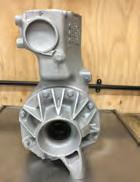
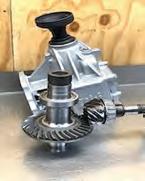
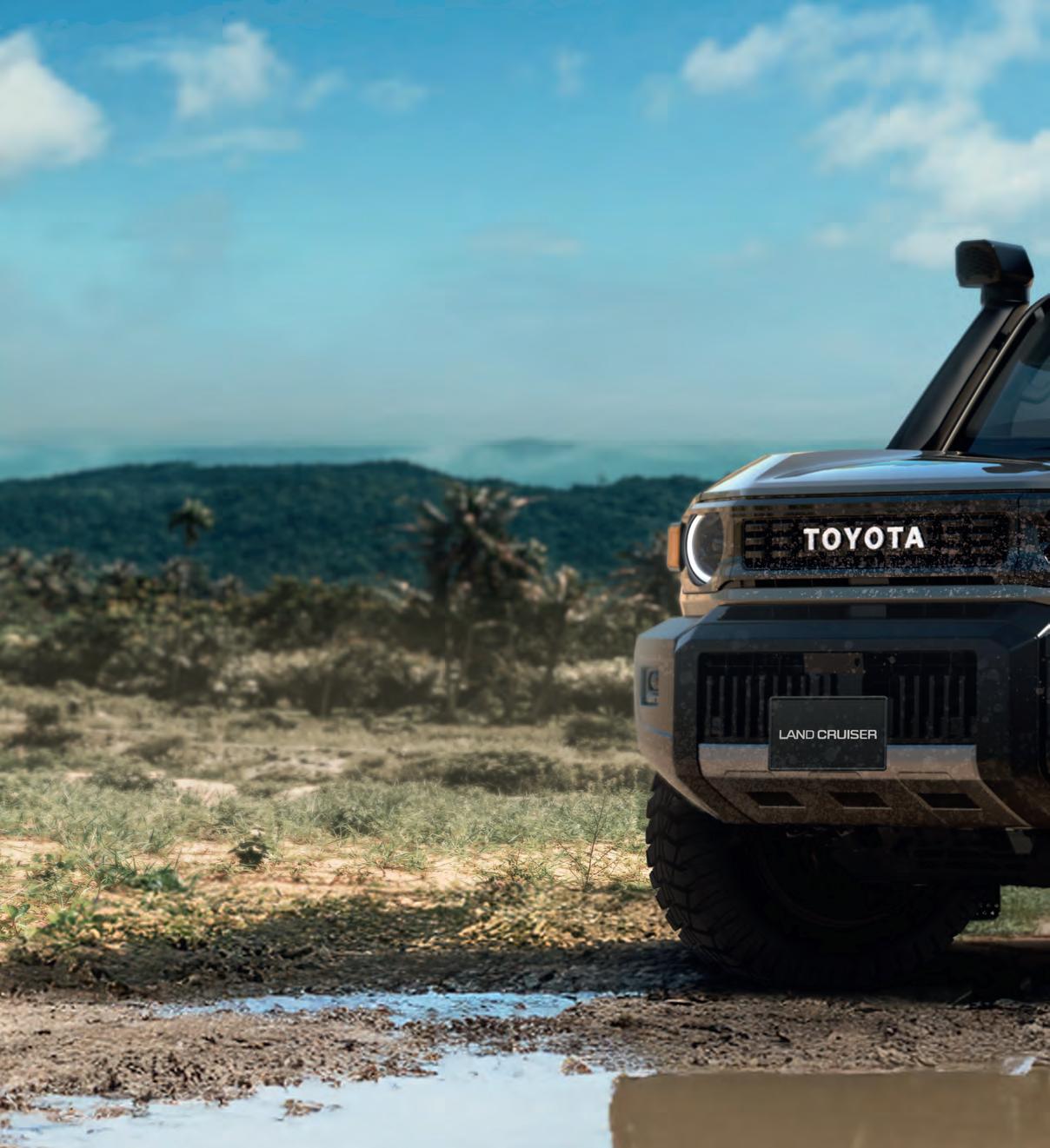

TOYOTA LAND CRUISER FJ PROMISES
OFF-ROAD FUN IN A DEFENDER 90 SIZED PACKAGE – BUT ISN’T COMING HERE



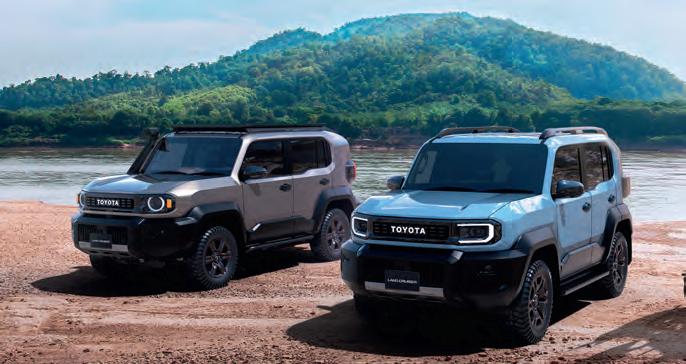




Toyota has unveiled the new Land Cruiser FJ, an off-roader similar in size to the Land Rover Defender 90. This will go on sale in Japan in the middle of next year – but doesn’t currently feature in the company’s plans for the UK or Europe.
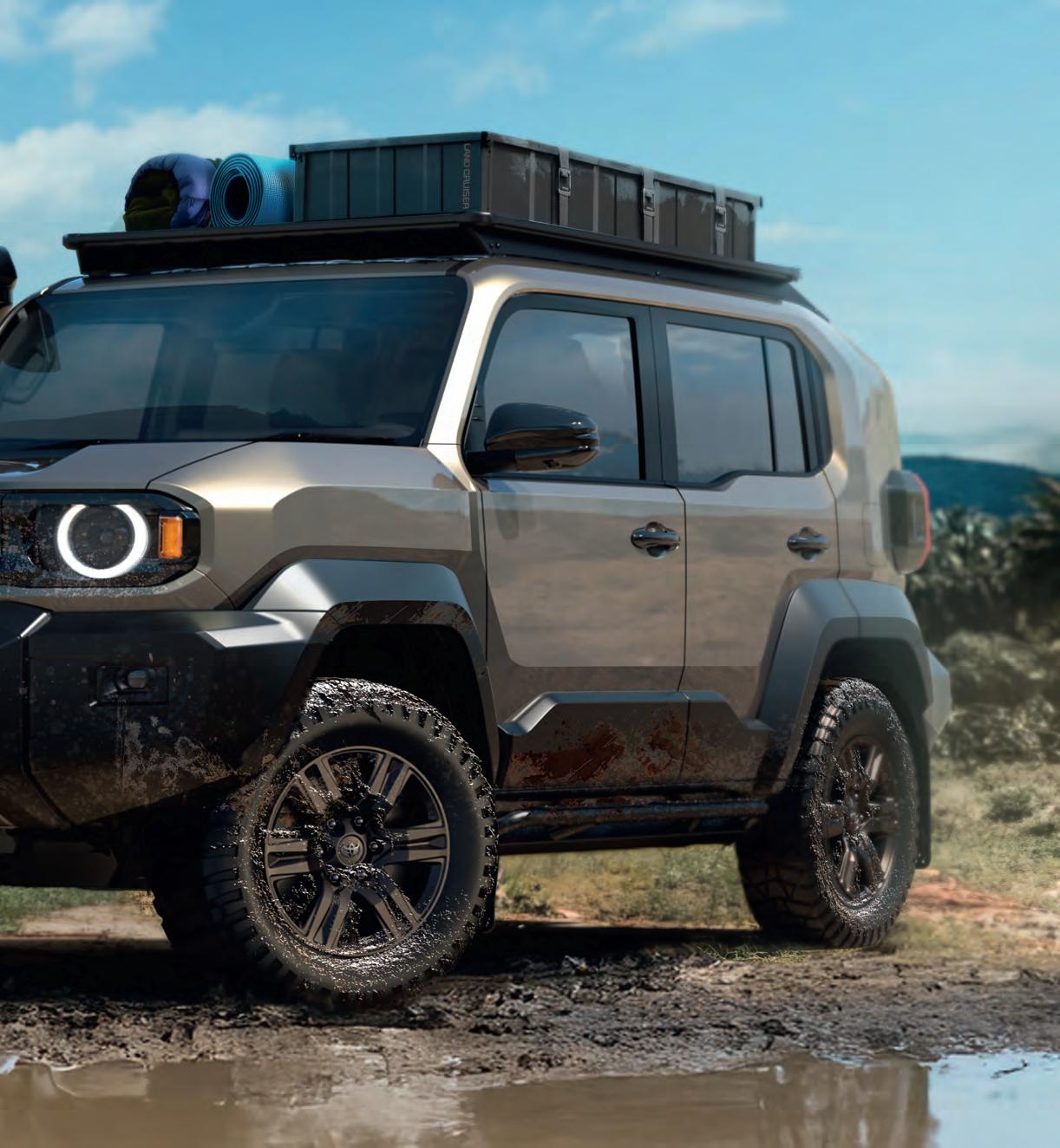
Powered by a 2.7-litre petrol engine delivering 163bhp and 181lbf.ft, the FJ drives all four wheels via an electronically controlled six-speed automatic gearbox and part-time transfer case. It’s based on Toyota’s well proven IMV platform and promises similar articulation to the
70-Series as well as a turning radius of just 5.5 metres. Additional underfloor bracing adds extra body rigidity, while Toyota says that ‘extensive off-road testing (has) identified points for improvement to ensure true Land Cruiser-ness – reliability, durability and off-road performance.’
In addition, the FJ has been developed with modification in mind. This was of course something Land Rover went after with the current Defender, and has long been an area in which the Jeep Wrangler has led the world. In Toyota’s words, ‘options that expand the joy of
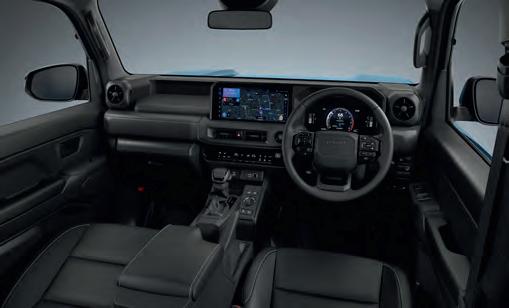
customisation will be introduced. Various items are scheduled to be introduced sequentially during the model life. Availability and content will differ by region.’ These include the bumpers, whose segmented design allows them to be removed one part at a time to let you customise them in your own unique way – or, possibly more likely, replace only the localised area that you’ve just stuffed into the ground.
The FJ’s wheelbase is 2580mm and its length 4575mm – something that will come as a surprise to the many people who seem to be taking one look at the pictures you see here and assuming it must be the same size as a Suzuki Jimny. Like that vehicle, its round headlamps hark back to the styling of vehicles from a bygone generation, and its boxy, squared-

off body is designed to cross extreme terrain without damaging itself as the suspension beneath it flexes.
Also like the Jimny, however, the FJ is petrol-engined – and this can have done no good to its chances of coming to Europe. Even as Suzuki was launching that vehicle back in 2018, the company’s executives were telling us that emissions rules based on the average of a manufacturer’s entire registrations would make it impossible to sell in anything like the numbers the market wanted.
While Toyota’s volumes, and thus its ability to absorb a high-emissions model, are far greater than Suzuki’s, it’s highly unlikely that the company would countenance bringing in the FJ unless the factory were to make it available in hybrid form. The plug-in powertrain from the
current RAV4 and Lexus NX would seem to be a good fit, though the engineering required would be hard to justify for what, it global terms, may only turn out to be an incidental market.
At present, it remains the case that the only Land Cruiser you’ll be able to get in Britain for the foreseeable future is the current 250 Series – whose traditional diesel engine is currently in the process of being replaced by a 48V hybrid unit. This is priced from £77,845 – leaving, you’d like to think, plenty of space for a smaller model to slot in below it. Every indication is that the new Land Cruiser FJ will not be that model – but with no competition left at all in the affordable off-road sector, we can always hope that Toyota will be the company that wakes up to the opportunity this offers.


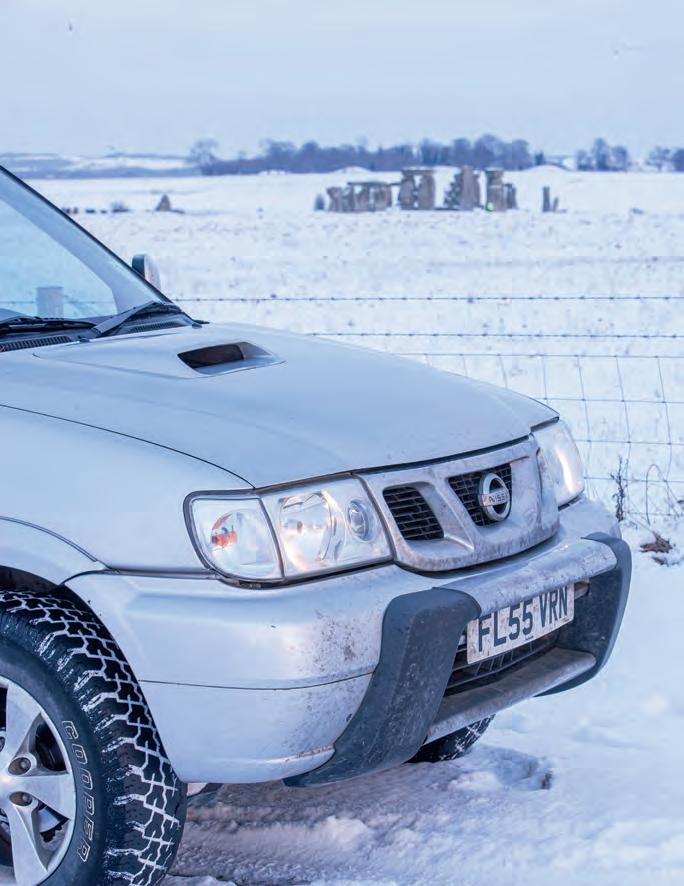
IT’S BEEN A LONG TIME BUT, after a huge effort by the Green Lane Association and many other user groups, the small network of byways close to Stonehenge are finally open again. Closed for years on a rolling temporary traffic regulation order, for no obvious reason other than rights of way being inconvenient, these lanes are wholly sustainable and suitable for almost any vehicle – indeed one of them, which runs right past the stones, almost always has a variety of cars and camper vans parked along its verges.
In addition to this short lane, the rights of way in the immediate area also include one running north towards Larkhill from the Stonehenge site and another which heads south-west across Normanton Down from the far side of the A303, eventually concluding at a junction with the A360. These lanes form one contiguous route of around three and a half miles – although
to follow it this way would mean crossing the phenomenally busy A303 at a junction which GLASS asks all users to treat only as a left turn.
Happily, there’s a second lane just to the east of this one which runs south from the A303 towards the hamlet of Lake. Like the others, this is well surfaced and eminently usable – we once encountered a memorably ridiculous (but very determined) attempt by a couple of local residents to prevent us from continuing on it on the basis that we might scare their horses, but that was a good many years ago and GLASS’ Trailwise 2 website shows no suggestion of lane users having come up against similar antics in recent times. One restriction which certainly isn’t ridiculous and must be treated with respect is the temporary traffic regulation orders which continue to be active on all these lanes during the period around
the winter and summer solstices. We once went laning near another site (the Avebury stones) without realising it was the summer solstice and while it was like stumbling into the middle of a very happy party, we had never seen congestion like it on a green lane or anywhere else. Reason enough to avoid Stonehenge for a weeks to either side of these dates (the solstices themselves are normally on 21 December and 21 June, give or take a day either way), even if they weren’t closed anyway.
So it’s good news, though as always on the lanes the potential for things to turn sour is always there. ‘I am concerned that the Council are still under pressure to control access, particularly regarding extended stays by vehicles,’ comments GLASS’ Wiltshire rep John Lippiatt. ‘If any of you notice any restrictions being considered, please make a written objection and copy me in by emailing wiltshire.rep@glass-uk.org.
Elsewhere in Wiltshire, the heroes and heroines of the Green Lane Association’s rights of way signposting team have been out half a dozen times so far this year. Over many years, this initiative has transformed the Plain from a place where it’s almost impossible not to get lost into one where it’s similarly hard to go wrong.
Nonetheless, people can still mess up in other ways. And, almost unbelievably, Wiltshire rep John Lippiatt says that with the wet season on the way, ‘based on evidence from last year on the Plain, we can expect problems with people using the sign posts as winch anchor points.’
Of course, if you need to winch on a green lane you’ve already gone wrong. Mistakes do get made, however, and there are parts of the Plain where these posts may be the only vertical thing around. Nonetheless, they’re only retained by a bag of postcrete at best (early on in the waymarking project, they were simply rammed into the ground) so there’s no way they’re going to stand up to being used as winching points.
‘If you see someone about to do this,’ suggests John, ‘and you are comfortable with the idea, please offer your vehicle as an anchor. And try to get them to join us while you are there!’’
£1543.50 inc VAT (2400mm), £1281.36 inc VAT (1900mm) | www.expedition-equipment.com
The Ineos Grenadier may not be the cheap and basic vehicle they started out trying to build, but it has quickly become a leading player in the serious off-road market. And serious vehicles need serious kit – such as the range of Eezi-Awn roof racks on offer through UK importer APB Trading.
These include the K9 rack system, which measures 2400mm long and 1600mm wide. Eezi-Awn says these are ‘thinner, stronger, more functional and more aerodynamic than the competition, and ultimately designed and built to last.’ The competition would no doubt demur, but Eezi-Awn’s reputation speaks for itself so let’s leave it at that.
The K9 rack has a fully welded low-profile platform, and by low-profile we mean just 13/8” high. Its slats have 51/8” wide M8 T-slots and its top perimeter has more of the same, this time M6 in format, while the bottom cross-braces are semi-elliptical to reduce wind noise. The whole thing is made from aluminium to keep its weight down, and it offers multiple mounting
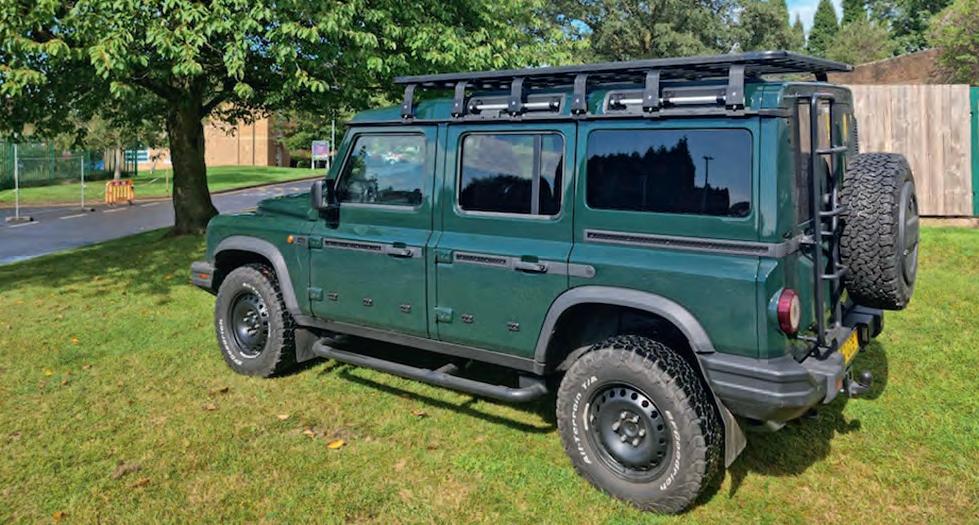
configurations and a full complement of accessories to let you carry kit in no end of arrangements. Naturally, it comes with everything you need to fit it.
• If you don’t want a full-length rack on your Grenadier, APB also offers a three quarter length Eezi-Awn measuring 1900 x 1600mm. This is another part of the K9 range which in total includes five different lengths and three widths.

IF YOU’VE GOT A FREELANDER 1 and you’re looking to freshen it up, Rimmer Bros currently has a couple of wheel designs on sale at clearance prices.
These include the 16x6.5” Triple Sport alloy, an iconic early Freelander design, which is suitable for all models from throughout the first-generation L314 production run. These are genuine items, not copies; they’re priced at £82 plus VAT apiece (that’s £98.40 inclusive) – or if you really want a bit of value, a set of four will only cost you £242.50 (£291 with the dreaded). That’s only sixty quid a corner.

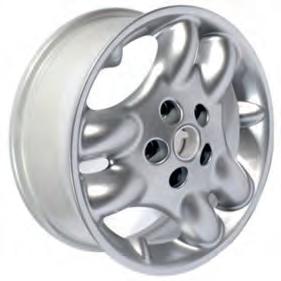
If you could do with an extra inch, which is nothing to be ashamed about, the 7x17” Vortex alloy is also on clearance at £104.23 a throw (£125.08 inclusive). These too are suitable for all Mk1 Freelanders, with a 114.3 PCD, however stocks are much more limited in this case.
£650 plus VAT | www.ks-international.com
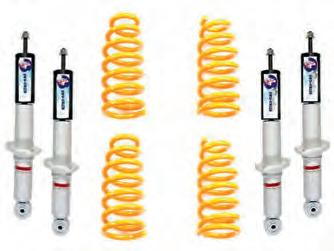
BACK IN THE 1990S, the Mitsubishi Shogun was considered to be one of the most blingy and least off-roady 4x4s on the market. Then the Mk3 model came along in the year 2000 and on the face of it, it was less off-roady than ever, with a monocoque body supporting all-independent suspension and, soon afterwards, the previously standard rear locker being dropped in favour of traction control on an increasing number of models. Yet despite this, the general direction of the 4x4 market at the time meant that this generation of Shogun climbed up towards the top of the ladder for all-round ability.
There are still plenty of Shoguns around from those days, which is testament to how well put together they were. And with short and long-wheelbase models available, as well as a rare but entertaining petrol engine option, they make a pretty good option for an off-road wagon that doesn’t cost the earth.
As with most vehicles of its kind, the Shogun will do a great deal on nothing more than a set of tyres. But if you want to add some more ground clearance, and get those tyres a size larger, this +2” suspension lift from KS International is perfectly in keeping with the vehicle itself. You get four coils and four nitrogen-filled shocks to cover both ends of the vehicle; the kit is suitable for all three-door, five-door and commercial models from 2000 on that are powered by the 3.2 DI-D engine – which is to say almost all of them.
REMEMBER THAT SONG, JUMP AROUND? Apparently it was something to do with dancing, but for a long time we assumed the composer wrote it about the speedometer in an old Land Rover.




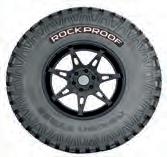
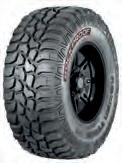
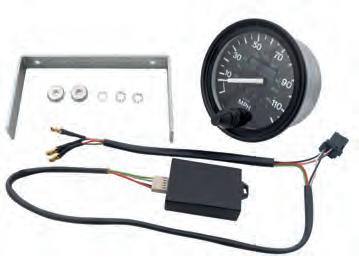
If you’re got a Defender dating from 1987-2006, Britpart has ranged a 12/24V dual-OLED MPH speedo with trip and total screens in the same case. These features a 100mm waterproof black dial, stainless steel bezel and push reset. The odometer, which activates only powered, comes with adjustable settings to suit various wheel sizes. Handy. The unit is supplied as part of a kit which includes the wiring and bracket you need to fit it. It’ll cost around £360 including the VAT; you’ll find it via www. britpart.com.



About half a dozen issues ago, we road-tested the Lexus LBX in Premium Plus form and gave it a very solid thumbs-up. It’s a genuine Lexus on a small scale, we found, and with a price range starting just below the £30k mark and climbing to just above ten grand more than that it’s fantastic value for money.
Now here we have the Takumi. Despite the name, Premium Plus is only the third up in a range of six main models; Takumi is fifth, with a price point that’s £3300 above it. Add another £2000 and you also get all-wheel drive, which is available only on the Takumi and range-topping Takumi Design.
As it happens, our favourite feature about the vehicle tested here was its glorious yellow paintwork. That’s a pretty subjective one, though, and it’s available across the whole range so we’ll try not to let it distract us. It does suit the LBX down to the ground though…
In addition to that £3300 bigger bill, ticking the Takumi box gets you a usefully wide slew of extras over and above the already impressive list on the Premium Plus. Among these is real leather trim, an upgrade over the synthetic hide you get lower down the range – albeit one which would actually turn some people against it. The LBX is aimed at a younger, trendier set than the typical Lexus, and young, trendy people are more likely to be vegan than old, crusty ones, but perhaps they’d not be expected to pitch this high up the range anyway.
No, not even with a 13-speaker Mark Levinson audio system on which to listen to the latest by Ugly Ozo, Chloe Qisha and Picture Parlour. Which is what we did, and jolly good it was too, though we can’t honestly say our chosen tracks sounded any better than they did on the 6-speaker system that’s standard on the rest of the range.
Nonetheless, the Takumi’s upgraded system also has active noise cancelling,
which along with acoustic front side glass ought to make it quieter in the cabin. We did think the Premium Plus had more background noise than we expected at motorway speeds, and while this one wasn’t perfect it did appear better, so without waving a decibel meter around like some sort of wannabe science freak we’d say the extra kit does its job. The effect does only seem quite marginal to us, though.
It was a warm week when we had the Takumi, so its heated steering wheel wasn’t necessary. You do get one though. Whether multi-coloured ambient interior lighting is ever necessary is another matter, but you get that too in lieu of the single colour on the Premium Plus so you can have fun matching it to your choice of paint colour.
A leather gear knob is something else you might be able to live without, but an adaptive high beam function for the headlamps is genuinely useful. Rather than dipping the lights, this monitors the traffic

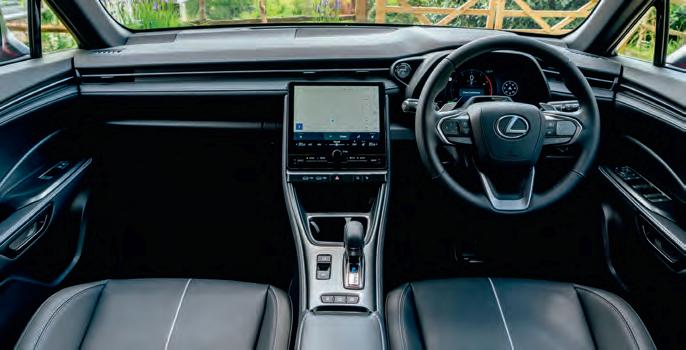



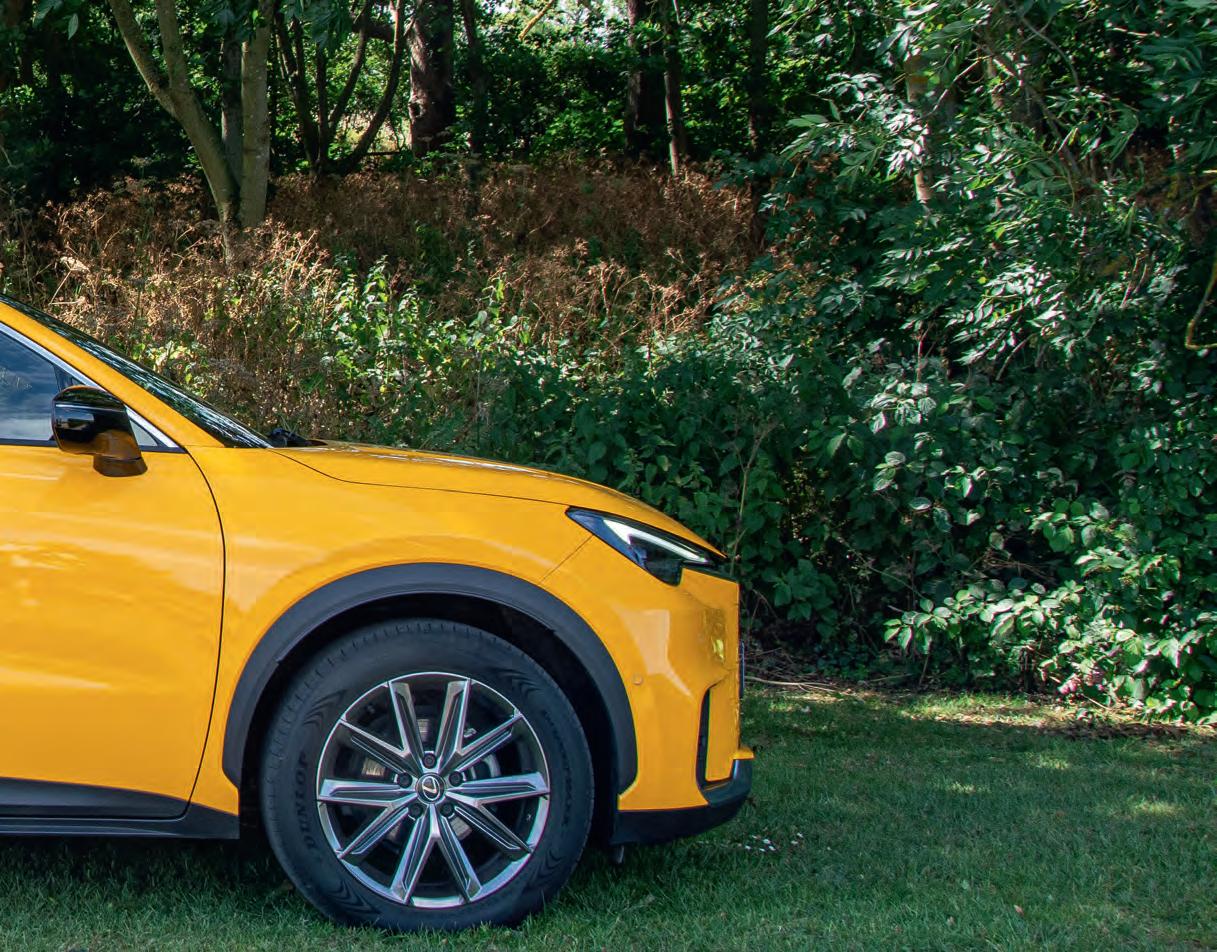
ahead and switches off any individual LEDs within them required to maintain your mainbeam visibility while not dazzling anyone else. It’s incredibly effective and makes for much safer and more relaxing driving at night. It would be reason enough on its own to make the jump up to Takumi level.
The same could be said of Intelligent Park Assist, a function which allows you to pull up close to a parking spot (parallel or perpendicular), press a button on the centre console and sit back while the car does the rest. You need to trust in your vehicle, but if you’re an off-roader you know how to do that. Once again, very effective indeed and, once you’re used to it, well worth having for its stress-relieving properties.
We’re not huge fans of electric seats, on the other hand, because normally they just take ten times longer than adjusting them by hand. The LBX’s are about as unfussy as they come, and they allow 8-way adjustment instead of the mere six others
must suffer, but the main plus point here is that the driver’s side has a memory function. Ideal in vehicles with more than one driver constantly jumping in and out of them.
What we really don’t like, though, is seeing manufacturers trying to strong-arm you into high-spec models by keeping back safety equipment. In the case of the LBX, the Takumi gains lane change assist, front cross traffic alert and a panoramic view monitor over the rest of the range; you’d think that these things would at least be available as options but no, if you want them you’ve got to shell out for 40 shades of ambient lighting as well.
That’s a poor show, but by no means is Lexus alone in it. And it’s further reason to upgrade to the Takumi – which from £38,495 is no longer giving off bargain vibes, though when you compare it to some of the other choices at this kind of money it continues to look like a very attractive choice indeed.
Prior to driving this example, we felt sure we’d landed in the sweet spot with the Premium Plus. Certainly, we never felt as if we were wanting for anything during our week with that vehicle. Having experienced the Takumi, however, we’d be very tempted. Not all of it appeals (even the leather seats, which didn’t really look or feel any better to us than the previous model’s synthetic trim), but in the adaptive high beam, auto parking and pano monitor you have three features that are well worth having. The fancy stereo and added sound deadening are nice, too, even if we didn’t hear a huge difference, and come winter it’s easy to get soft around the edges for a heated steering wheel.
Is it all worth an extra £3300? We were sceptical at first but yes, the Takumi did win us over. You’re paying for a Lexus and it’s that bit more Lexusy. We’d be perfectly happy with a Premium Plus but yes, we’d dig that bit deeper. Though only if we can have it in yellow.

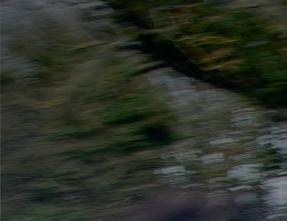



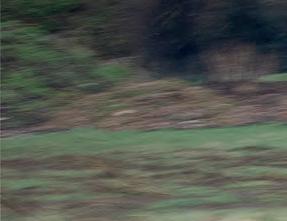
Daring to be different can mean spending a lot of time on money on having a car that’s not as good as everyone else’s. Or it can mean having the vision to do something everybody else wishes they had thought of…
Words and pictures Dan Fenn
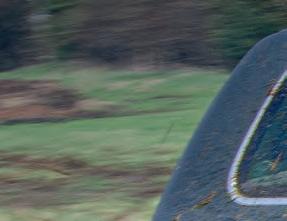





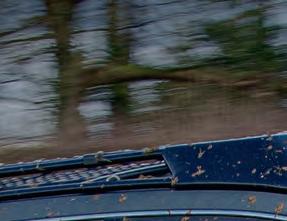



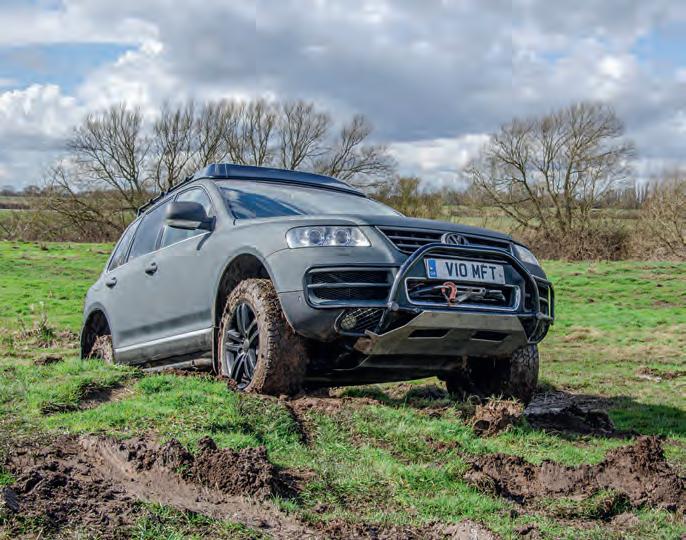
Times change. SUVs came from a rich and noble off-roading background but people wanted them for everyday cars, so the industry adapted and these days most of them don’t even pretend to be off-roaders any more.
In a similar vein, Yorkshire company Prospeed came from a rich and noble motorsport background. It did some outstanding special vehicle builds but it also developed a really neat line in roof racks and these turned out to be so popular that if you look on its website now, that’s all you’ll see.

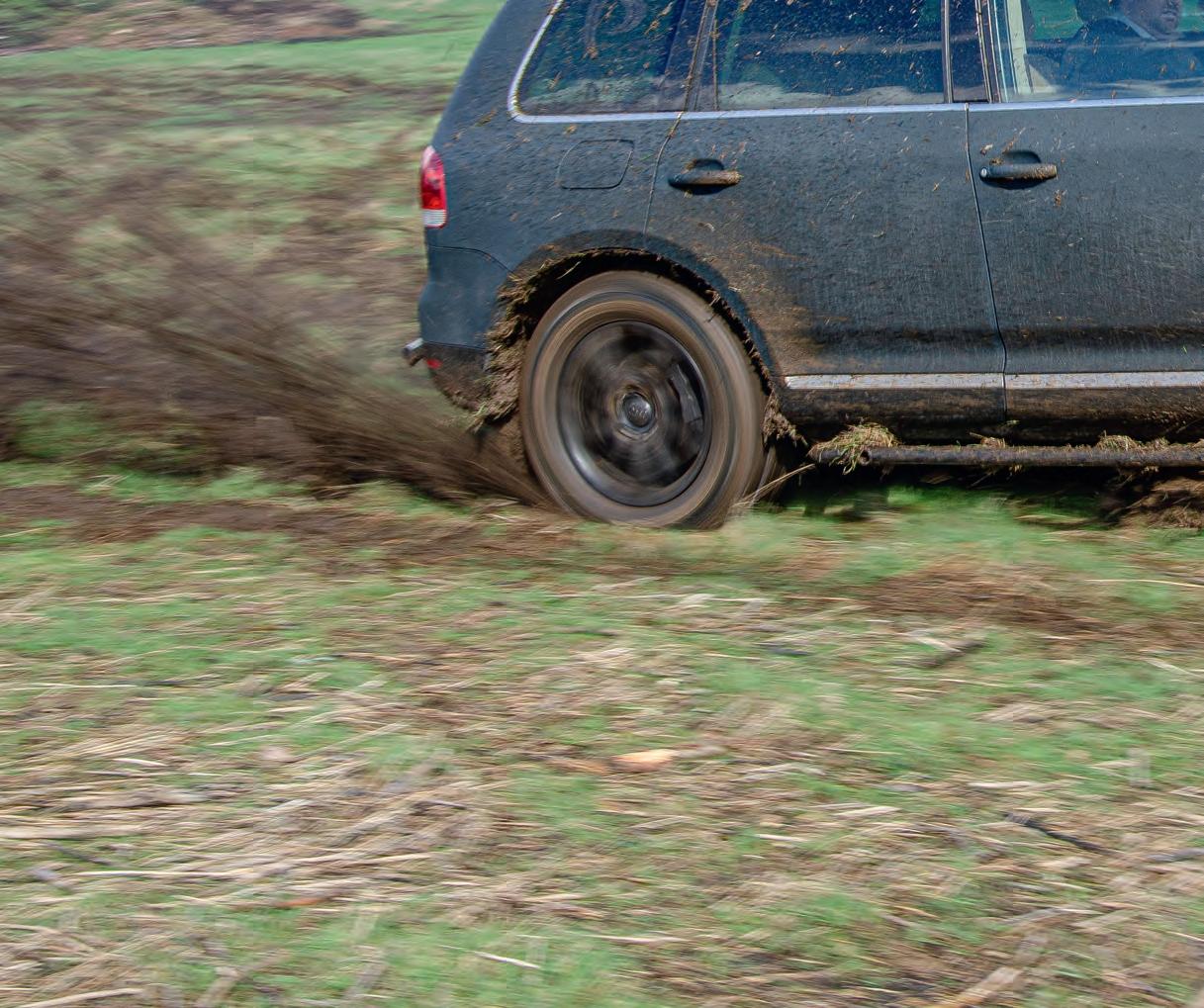

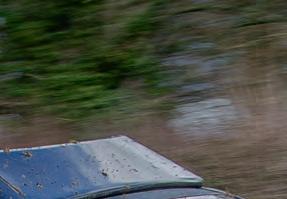


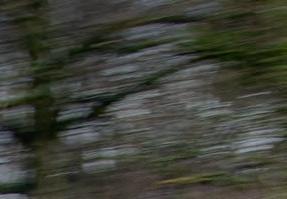






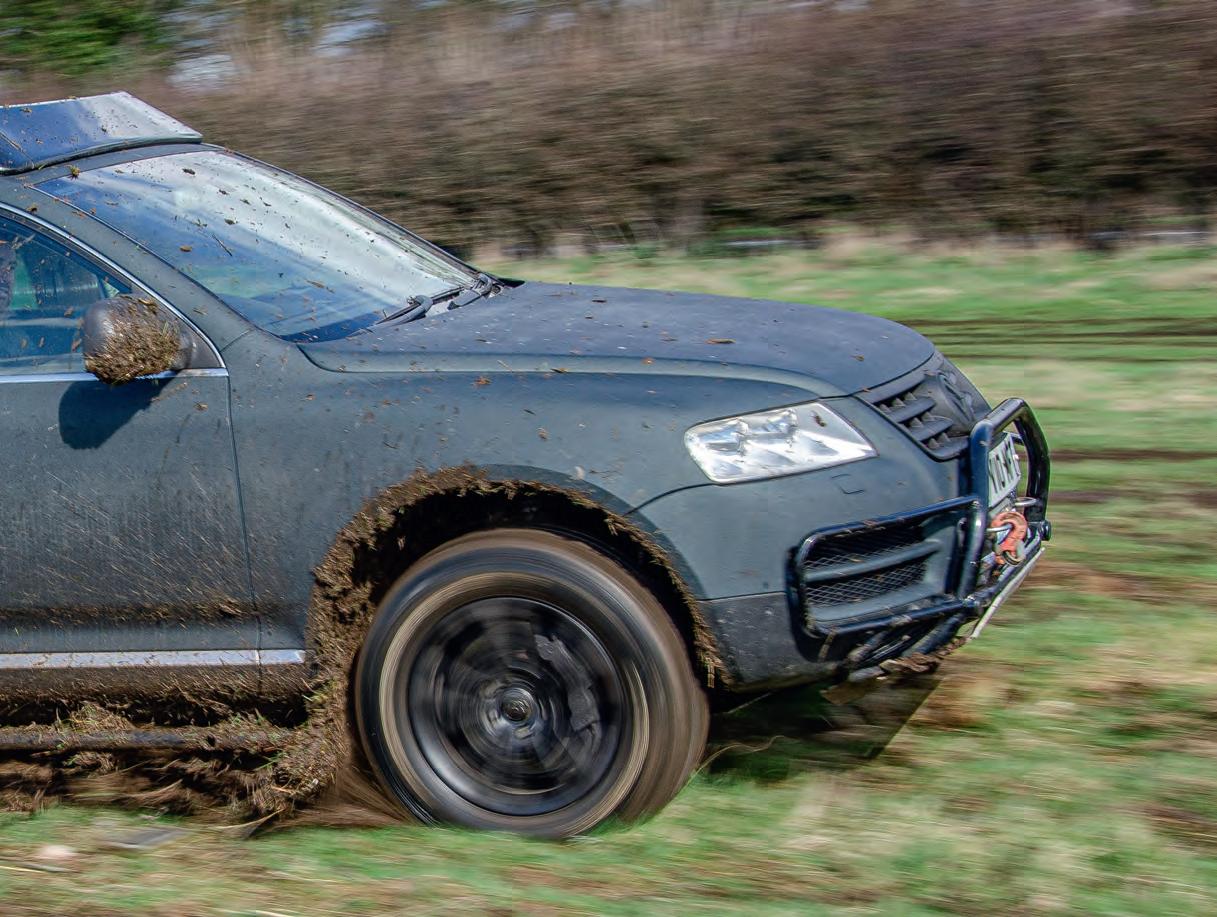
We like roof racks, but we like special vehicles more and they don’t come much more special than this. A modified Volkswagen Touareg? Now that’s something you don’t see every day.
The first-generation Touareg was a much more capable vehicle than most people tend to assume. In the hands of VW’s global PR machine, it towed a Boeing 747 up a runway and set world records for endurance driving and four-wheeled mountaineering. In our hands, it’s been buried axle-deep at Holymoorside (in what wasn’t mud, as it turned out…) and coaxed
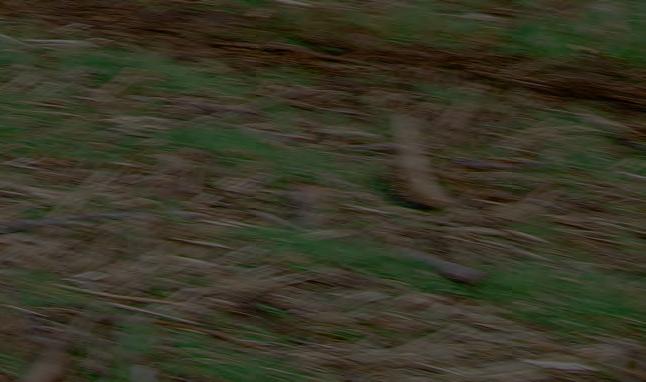
through a three-mile tidal ford on the west coast of France.
And in the hands of Prospeed? Well, they turned one into the vehicle you see here.
The story began with the company’s aerodynamic low-line roof racks, which it started out making for the Land Rover Discovery 3 and 4. These are where its current business came from, which is no surprise at all when you look at one, but in this case they acted as no more than a calling card for the company.
One day, the phone rang. A chap from another part of the country had seen

Prospeed’s Disco rack and wanted to know if they could make one for his 2003 Touareg.
The answer to a question like that is bound to include some reference to money, but that didn’t seem to concern the vehicle’s owner. In fact, it seemed to egg him on.
Encouraged by finding a company whose answer was yes, he came up with a further challenge: as well as the rack, he wanted them to fit the Touareg with everything else they could make for it.
That’s probably a bit of an exaggeration – there’s no roll cage to be found here, for example. But having dropped off his truck,
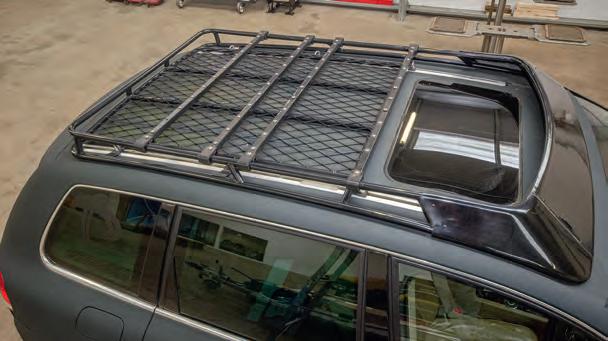

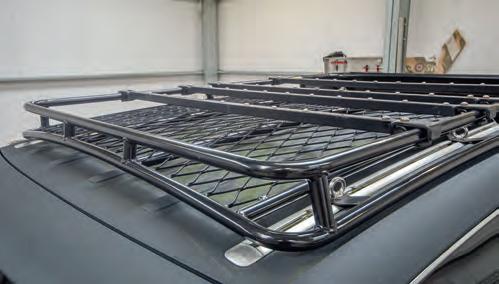
Here’s where it all started. Prospeed already makes a low-profile roof rack for the Land Rover Discovery 3, and when a customer approached the company asking if they could make one for his Touareg they were happy to oblige. When he invited them to make everything else for it that they thought they possibly could, too –well, a couple of months later, he got it back looking like this…

Creating rock sliders for the Touareg proved to be particularly challenging. At first glance, they just look like tubular side steps, but get underneath and you’ll see a bracing structure that runs the entire width of the vehicle to create what Prospeed refers to as a ‘rock cradle.’ The problem is they need to be able to bear the vehicle’s weight – and there’s nothing strong enough to mount them to until you’ve gone well down beyond the outer edge of the sills, meaning a long cantilever is necessary. The cradle structure helps provide this – as do support plates which perfectly mimic the shape of the sills to ensure that when the sliders take an impact, the load is spread as evenly as possible
when he returned a couple of months later it had been adorned with front and rear skid plates, sump, diff and wishbone guards, fuel tank protection, rock sliders, a bull bar and hidden front winch mount and a rear bumper and ladder. Oh yes, and a roof rack.
Not a bad little collection of mods, that. But there was more. Deep in the guts of
the drivetrain, Prospeed supported the rear prop on a centre bearing taken from a V8engined Toyota pick-up. This was mounted in a housing the company designed and manufactured itself using a 100% CADmade model whose accuracy was proven when it slotted in first time.
And why was a new centre bearing necessary? Well, if a Touareg’s going to break anywhere it’s likely to be there. And on

a vehicle with such a high degree of off-road prep, it was bound to be given a tougher time than standard – especially as the other big change Prospeed made was to remap its engine.
If you know your early Touaregs, you’ll recognise that this could mean a number of things. It could mean getting a little more life out of a small but honest 2.5 or 3.0-litre diesel. It could mean getting all revvy and ridiculous with a 3.2 V6 or 4.2 V8 petrol unit. Or it could mean doing something cheerfully bonkers with the 5.0-litre V10 TDI that sat on top of the first-generation Touareg range throughout its illustrious history.
Given that this Touareg is owned by a man who obviously loves his toys and isn’t scared to spend money on them, it won’t surprise you to learn that it’s powered by the big one. The number plate might have given it away too, obviously.
Anyway, Prospeed got down to work and wrote a new map for the engine’s brain. That’s how you do tuning nowadays. They hadn’t actually had it on a rolling road, but the company quoted a confident estimate of 1000Nm. That’s 737lbf.ft in old money, or around 30-35% more than standard.

As for power, that was already on the right side of 300bhp when the Touareg was new. Rather than tossing figures around, though, Prospeed prefers to quote a realworld example of what it can do.
Enter stage left another of the company’s customers, who showed up in an Audi RS6. That’s the one with the V10 engine from the Lamborghini Gallardo, and with 572bhp and a 4.5-second 0-60 time it’s not slow. Its owner appears to have succumbed to a ‘mine’s faster than yours’ moment – and having found somewhere suitable, the two vehicles lined up alongside each other waiting for the off.
Once the speeds reached a level that would be illegal on a public road, sure enough the RS6’s greater outright power and better aerodynamics won the day. But the big, heavy, diesel-engined Touareg stayed with it all the way to 70mph. Nice.
When Volkswagen first launched the Touareg to the press, they practically apologised for how boring it looked under the bonnet. It still does today – but those plastic shrouds cover a 5.0-litre V10 TDI that won its class in the International Engine of the Year Awards two years running. That’s a good start – and with Prospeed’s own remap now making it better than ever, this particular vehicle has gone up against a Lambo-engined Audi RS6 and matched it in a 0-60 drag
How does this translate into off-road ability? Well, a new generation of tuning software came out after the company had mapped the V10 engine – and in addition to liberating more power and torque, this opened up the option of modifying the vehicle’s traction control. Which, if you’ve ever tried to drive a Touareg on mud or wet grass, you’ll know can be a gigantic pain in the neck or anywhere else you care to mention.
with the full set. And when all four tyres are spinning at the same time, what’s it going to do then?
Obviously, spinning through is a well used technique off-road – if you don’t have
In a drag race from 0-60, the big, heavy , diesel-engined Touareg stayed with a 572bhp Lamborghini V10-engined
As normal, when a wheel starts to spin the traction control starts applying the brakes. In most situations like wet roads or gravel tracks, this works just fine. But when there are locked diffs in the mix, something’s got to give – and the Touareg was available
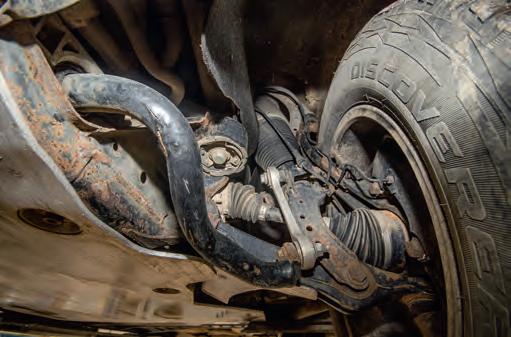
the traction to do it on tiptoe, pulsing the throttle or even just keeping it floored can be the only way to maintain your momentum. This is not, however a vehicle built for self-cleaning tyres that eject material as they turn. So spinning all four wheels is a technique you find yourself using a lot. Problem is, when it detects that that’s happening, the traction control thinks you’re

Below left: Suspension is original spec, using the height-adjustable air springs that were standard on V10-engined Touaregs. These aren’t the wishbones that were fitted in the factory, though – Prospeed reports that with the way it’s used, the vehicle goes a set every 18 months or so
Below right: When you’re going off-road in a vehicle like the Touareg, tyres will always be an issue. You’re looking at a set of 18” Audi alloys here, clad in 265/60R18 Cooper Discoverer A/T3s. Not a bad compromise if your off-roading is limited to higher-traction conditions, but for getting about in the sort of mud and wet grass we see so much of in Britain you’d want to search out one of the M/T options on the market




Where once there was a shapely front bumper made of horrible plastic, now there’s a shapely front bumper made of lovely steel. It’s extended upwards into a full bull bar and is tied in with a hidden winch mount in front of the rad. Underneat,h the bumper provides bombproof support to a bash plate made of 6mm steel and cut out to allow air flow to the gearbox oil cooler. There’s also a very nicely shaped bumper bar at the back, along with a monster of a skid plate
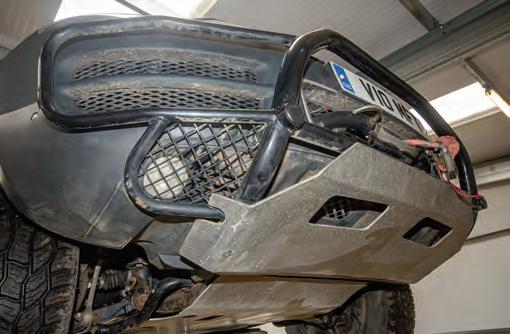










barrelling headfirst into a mighty one – and shuts off the gas. All well and good when it’s protecting a driver from himself, but it still does this in low box – where rather than saving your bacon, it’s far more likely simply to get you mired.
We know this because we experienced it, time after time, on the aforementioned sortie in Holymoorside, where the axle-deep burial was preceded by several screams of frustration as the revs died while we were trying to scale innocuous looking hills. And we stood watching it happen again
while taking the pictures you see here –Prospeed’s man behind the wheel, who’s a tremendously experienced rally driver, found it stepping in time after time to stop it going sideways. Which is fine, unless you want it to go sideways – or keep spinning its way slowly forward until your tyres find something to bite on.
The answer? A more modern map, of course. And grippier tyres, obviously. Not that the choices are exactly overwhelming.
As you see it here, the Touareg was riding on its standard height-adjustable air suspension and running 265/60R18 Cooper Discoverer A/T3s on 10-spoke Audi alloys. That’s a relatively mild all-terrain pattern, and on the admittedly very wet verges of the River Ouse they were very obviously struggling for grip.
You can get a mud-terrain in this size, if you look hard enough. But if money were no object (and on this build, there’s every sign that it wasn’t) we’d be looking to replace the air suspension with a traditional spring


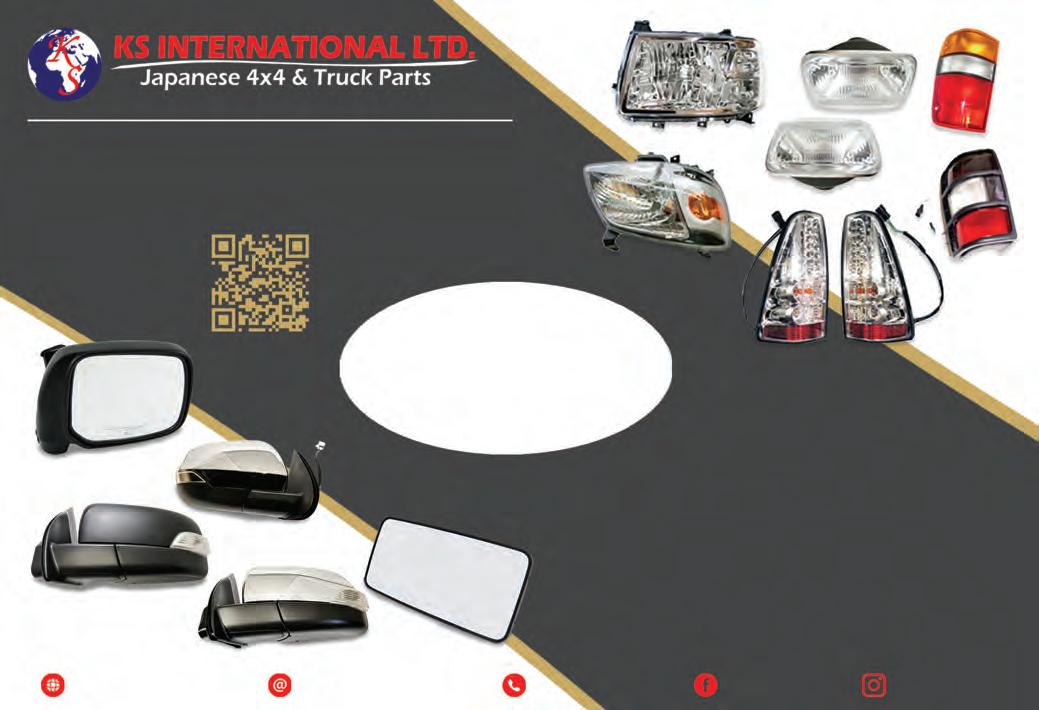

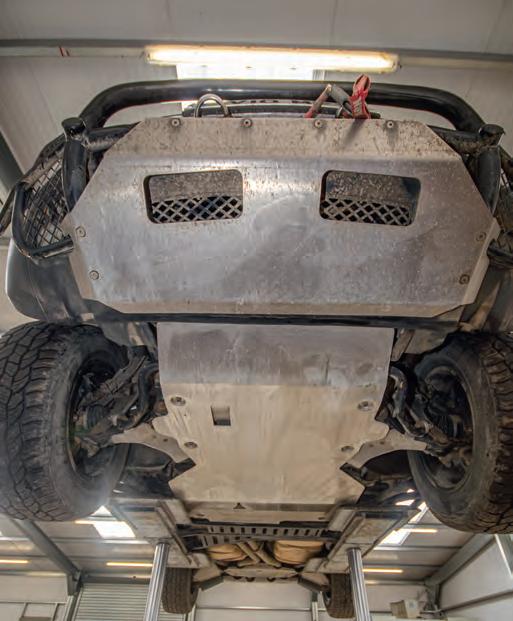

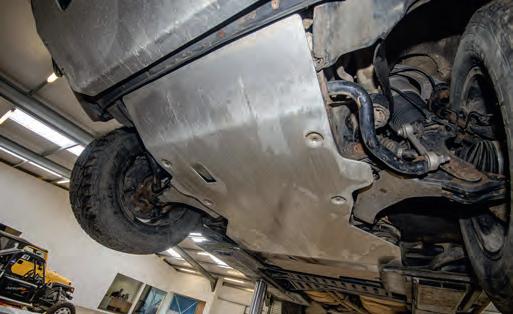
Beyond the front plate, a sump guard made from the same material extends back the whole way beneath the engine and transmission. Once again, this is shaped like a ski to let the Touareg slide over obstacles for which it doesn’t have sufficient ground clearance. Note also the guards attached to the suspension wishbones – these are made from thinner steel, as they’re not intended to take the truck’s full weight and it doesn’t do well to use heavier stock than necessary when unsprung mass is involved


Above left: Prospeed’s designers judged that there wasn’t anywhere suitable to mount a bash plate beneath the vehicle’s twin fuel tanks. So instead, they wrapped them in kevlar to provide extra protection against any rocks or tree stumps that do make it past what is a pretty good arrangement of components for keeping them out of danger
Above centre: Like the front wishbones, the rears are fitted with guards in 3mm plate to deflect them over anything hard. These also provide a front mounting point for splash guards which keep the majority of the mud and water away from the suspension units
Above right, right: Yet another 6mm plate protects the rear diff – which in this particular Touareg contains a factory-fitted locker. It’s shaped to take care of devil-may-care moments reversing manoeuvres, too
Below: Rear propshafts are a common replacement on early Touaregs, at least by Volkswagen’s generally bomb-proof standards. And when you’re adding weight, remapping the engine and giving it stick off-road there’s only one way the statistics are going to go. To strengthen it up as far as possible, Prospeed designed a housing to take the centre bearing from a V8-engined Toyota pick-up

and shock combo keeping it at or near its maximum height – because you just need to go an inch or two taller in the rubber department and there’s a wide range of top-quality mud-terrain patterns waiting to be fitted.
That’s assuming a smaller wheel size isn’t suitable because of the diameter of the brake discs, of course. And if you’re thinking in terms of keeping the air suspension at its maximum setting the whole time, well, software could no doubt be plugged in that would do it – however the effect on its longevity could only be guessed at and, more to the point, using
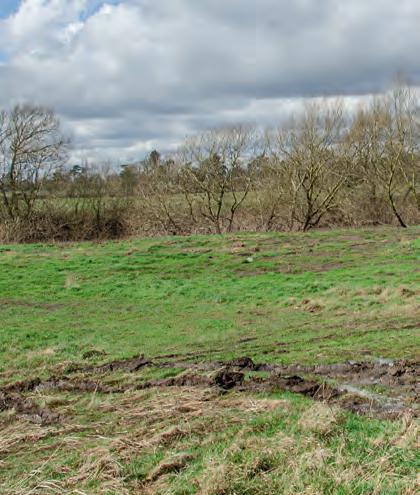

Above: Line-X is basically a truck bed liner which can be sprayed on to parts like bumpers to provide a scratchresistant covering – ideal for vehicles that spend a lot of time in the undergrowth. It can also be used for fullbody spray jobs, making a vehicle’s body far, far tougher than any paintwork could ever hope to be – and giving it the look of something out of a zombie apocalypse movie

the sort of performance this engine allows when you’re sat up high with no give whatsoever in your springs will only ever be a recipe for disaster. The Touareg’s ride quality on max height suspension is pretty dire, too.
We’ve always loved the Touareg here. To us, this is an example that’s taken the vehicle’s enormous potential and moved it on further than ever. For the sort of stuff we like to do with our 4x4s, there’s another step still to go – but we do recognise that as a huntin’ shootin’ fishin’ kind of a truck, which is also a thoroughly superb daily driver and a handy thing to have sitting around should your town be overtaken by fire, flood, brimstone or a zombie apocalypse, it’s absolutely spot-on.
Most of all, the guy who owns this truck could have chosen to be riding round in a brand new Range Rover or whatever. Instead, he chose this. And whatever kind of view you have on the off-road life, you’ve got to say fair play to him.




































































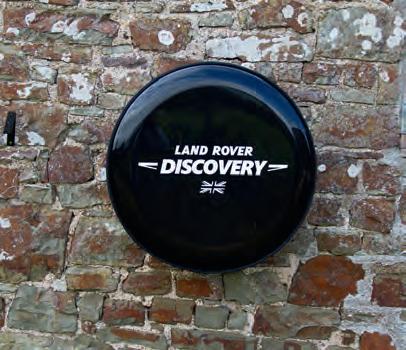




















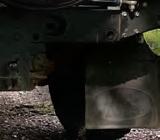




























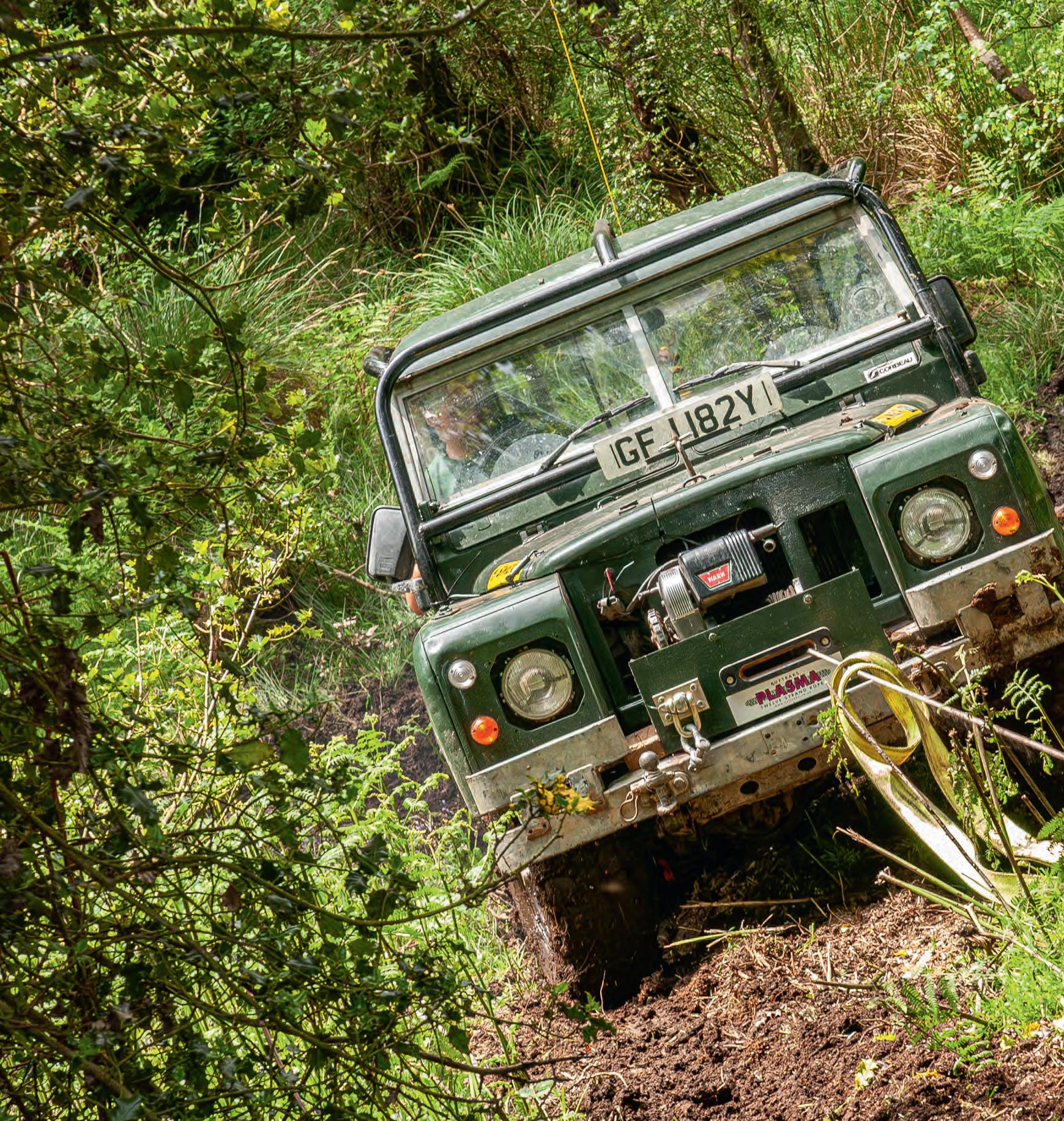


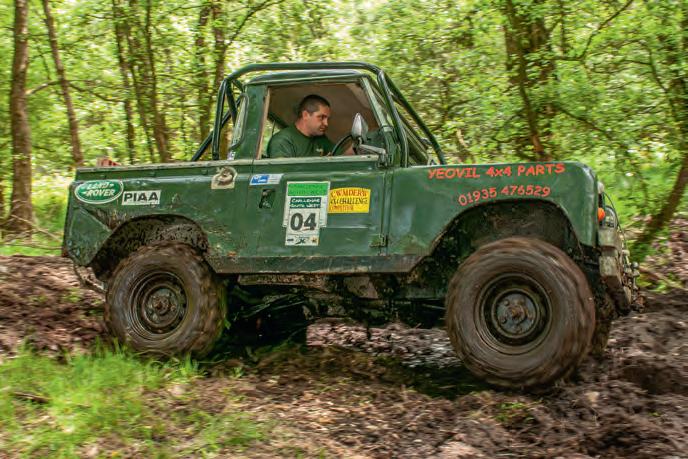
We all know how it goes in motorsport. It starts off with a few mates getting together to do it for fun and everyone can afford to take part. Soon someone does stuff to improve their car and everyone has to follow along if they want to stand a chance, and the arms race has begun. Almost immediately, people start dropping out because they can’t or won’t
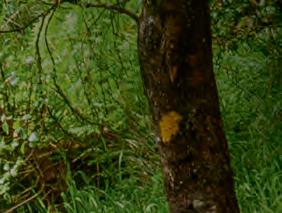






Traditional challenge events were left behind in the relentless race to build ever more expensive vehicles, but the budget off-roaders from back in the day are a reminder of how relevant a back-to-basics winch series could still be


Words Gary Noskill Pics Steve Taylor












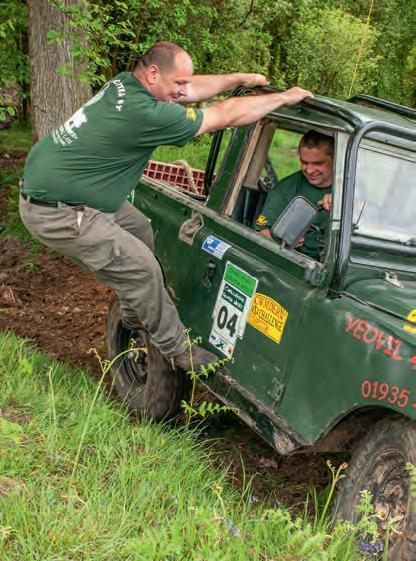


all race cars on a race track. With winch challenges, the organisers have to set out a course that’ll provide the top teams with meaningful competition – the problem being that in doing so, they create one which is basically impossible for anyone in a lowbudget vehicle.

spent the money it takes to keep up. Others with more money join the fray, the best of the originals battle to live with them, the budgets get bigger with every new build that enters and within a few seasons, a sport you could be part of for a couple of grand is now locked out by people with six figures behind them.
It’s sad but inevitable, competition being what it is, that this will happen. It takes
















longer with some forms of sport but in the world of winch challenges, there was a specific reason why progress (if progress is what you want to call it) happened at breakneck speed.
See, at Le Mans (to use a well known example), you get GT cars, prototypes and hypercars racing together. The differences in top speeds can be frightening but all the drivers know the score and crucially, they’re
Ironically, Le Mans has in the last few years introduced major rule changes designed to make it less about how much money you’ve got and more about how inventive your engineers are. The winching game, meanwhile… well, it’s thriving at the top end, for sure, albeit no longer in the traditional punch-hunt format, but where once there were several clubs running regional and national championships of their own, a search through some of the best known from back then now yields a depressing series of ghost websites and Facebook pages populated only by other third-party spam.
This is of course nothing whatsoever against the big-budget guys who have won their way to the top levels of extreme offroad sport. And we have to recognise that for those looking to run old-school punch hunts, there’s been at least one high-profile case of an organiser giving up after being targeted by a no-win-no-fee lawyer. Still, in many forms of motorsport the final step in the arms race has been the creation of backto-basics events for the sort of people who were priced out early on. So maybe there still is hope. We’re talking about a sport



Left: The Simex Extreme Trekker was a staple of winch competition in the early days, though at 32x9.50R16 Paul’s were small by challenge standards
Above, right: Paul needed to replace the knackered springs and shocks anyway, so he did it using a set of parabolics. This was an era when people were obsessed with getting stupid amounts of articulation and building barely usable vehicles in the process, but Paul’s leaf packs are flexing nicely enough to be worth the extra £100 it took. Note also the rock sliders, which he made up himself using high-tensile steel box
whose growth from real-world to big-money coincided almost perfectly with Britain’s descent from thriving economy to financial basket case, after all.
This here 88” Series III Land Rover is a perfect example of the sort of vehicle people were building back then, in the days
when it was possible to get out there and compete in what was basically a playday motor. Dating from 1983 and thus a pretty late one from the days of the sought-after 2.25-litre five-main-bearing engine, it was built by Paul Challis – who wanted to provide the answer for would-be challenge competitors on a budget. Back in the heyday of the winch scene, he ran a business

developing and supplying affordable vehicle mods; this truck was a showcase for them, and perhaps it could still now provide inspiration for people wanting to get back to the old days of real-world challenge events.
‘I can do a Series III to entry-level challenge spec for about two grand,’ Paul told us. Inflation has happened since (oh, and boy has it happened) then but you get

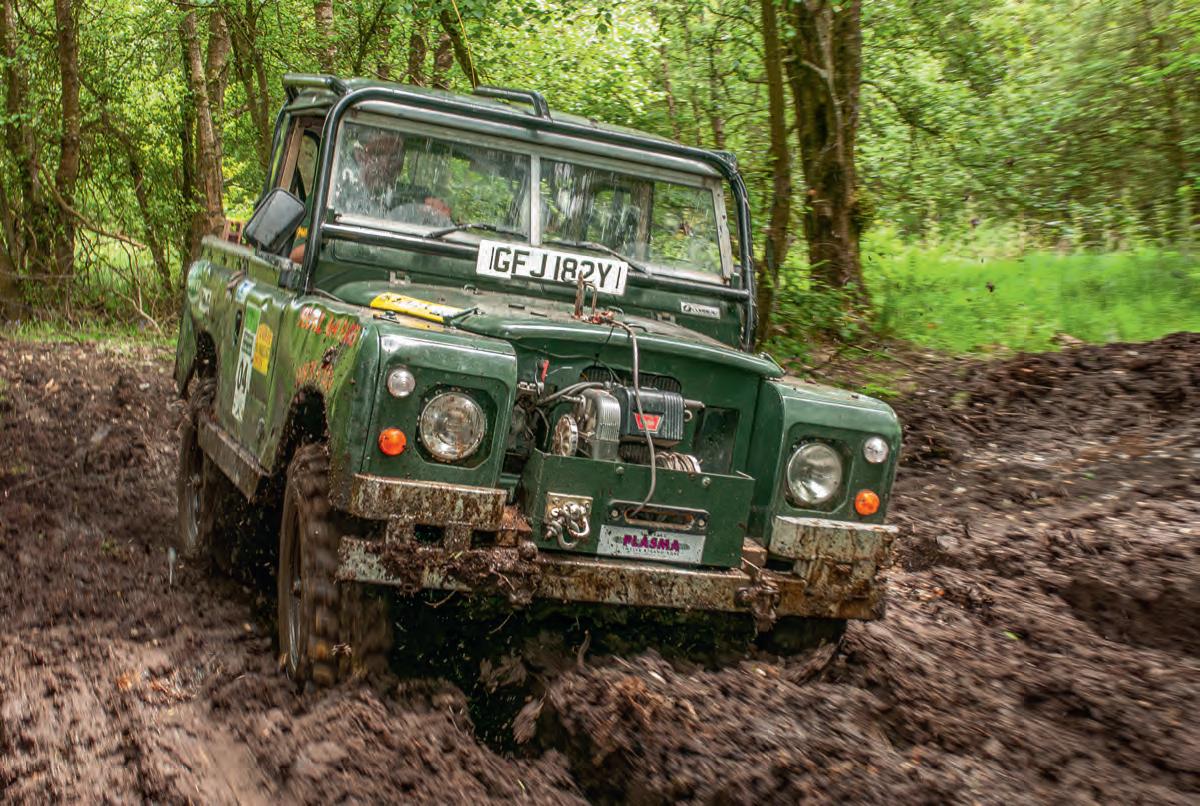
the point. His own truck would have stood you a bit more even then, being equipped as it was with a full cage and premium tyres (32” Simexes, since you ask); the former wasn’t mandatory in a lot of challenge events back then, though we’d question the sanity of anybody competing without one, and of course Simexes have long since gone from the UK and been replaced by various makes of remould for hardcore offroaders on a budget.
Elsewhere, the 88 runs parabolic springs and uprated shocks. Paul told us that he might not have bothered with them had

the original Land Rover bits not needed replacing anyway, but they were worn out and if you’re going to do the job you might as well do an upgrade at the same time. The springs are more flexible and also provide a slight lift, both of which are useful, and while the shocks are standard length they soften the ride on rough ground. Possibly not ‘useful’ as such, but definitely a good thing when, as is the way with punch hunts, you’re on board for hours at a time.
Overall cost? About £100 more than the standard Land Rover bits. Worth it? If you even have to stop and think about that, try seeing it as £25 a corner. There’s low-budget and there’s borderline psycho…
As we’ve already suggested, the same could be said of the roll cage. You might be allowed to compete without one, but of all the places not to try and save a couple
of quid. Paul’s was built to ALRC spec, for the simple reason that the Association of Land Rover Clubs was the only off-road motorsport body he could find that gave clear instructions on how cages had to be built. You can satisfy the FIA with a design that won’t pass muster with the ALRC, which sounds a bit mad but has the benefit of competitors knowing exactly where they stand. Paul was happy that by following the association’s rules, he was building a safe cage – and having had it scrutineered and logbooked, he was able to compete in member clubs’ CCVTs and comp safaris if he wanted.
Both Paul and his co-driver Martin Payne had already gained plenty of experience in both those disciplines, as it happens.
The instantly recognisable shape of the cage marks this out as a Rover-legal competition car. Paul even went so far as to have it logbooked, meaning he could enter any of the association’s trials or safaris in it – not that he wanted to, having discovered how much more driving time you get on a punch hunt


A standard Warn 8274-50 was among the few high-cost items on the vehicle. Paul mounted it on a winch cradle he picked up for £80. Note also the blocks of wood between the cradle and the inner edge of the wings, which keep them from flexing excessively
‘I suppose the basic principles of off-road driving remain the same,’ said Martin. ‘If you’ve got them in place, you should be able to transfer from one type of event to another without too much difficulty.’ One of those principles is of course that titles and won and lost in the workshop just as much as in the mud, and the two of them were rarely out of it.
Now, comp safari is most definitely a form of off-roading in which high-budget vehicles have come to overwhelm the real-world motors that first brought it to life. But Paul had a different reason for leaving it behind to go winching instead. ‘When you compete in safaris,’ he said, ‘you probably spend no more than 30 minutes behind the wheel during any one event. With challenge competitions, you’re often there all day!’ Ditto for trials, except your actual
driving time will be closer to three minutes than thirty.
Paul actually built the cage by modifying a rear hoop that was already in place when he bought it (from Martin, funnily enough). Down below, further high-tensile steel went into the rock sliders – box rather than tube this time, but still every bit as capable of taking the vehicle’s weight. Even back then, in the days before everyone had to be in a spaceframe buggy on tyres you can see from space, it was still normal to be on 35” rubber, so Paul was at an immediate disadvantage on his 32s – meaning those rock sliders were more important than ever if he wasn’t forever to be stuffing his sills into the deck.
Not that he could have gone much bigger if he wanted to retain that ALRC ticket, because the association’s regs mandated

a maximum height of 33”. And anyway, the investment in tyres was one of the big decisions he had to make when building the vehicle. ‘It was a toss-up between the Simexes and a diff-lock,’ he told us. ‘I thought the tyres would give me a greater benefit in maintaining traction and I’d be less likely to need a locker.’ These days it’s normal to have 40” tyres and two lockers, not to mention three winches and each of them owes you more than Paul’s entire budget for this truck, but this was a time when a mouse could still roar. Anyway, Paul seemed pretty happy that the 32x9.50R16 Simexes were proving to be the right choice. Something else it’s normal to have these days is a big beast of an engine.
Punch hunts have largely given way to the European version of US-style rock racing, after all. But Land Rover’s little 2.25 petrol
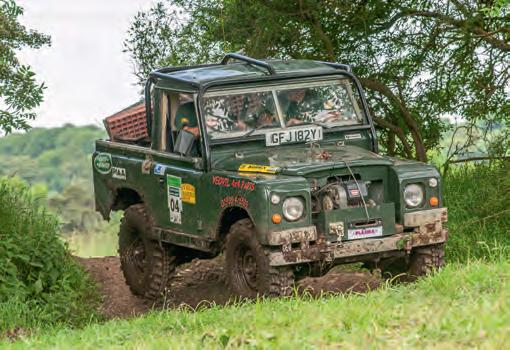
That’ll be why you can never have too much suspension, then. It still looks like a heavy landing (hope those waffles were tied down, even if it was on a long lead) but here’s where shelling out for a decent set of shocks pays for itself many times over
was just fine, even with taller tyres to turn and the extra weight of a winch and roll cage. ‘I’m not looking for masses of top-end power,’ Paul explained. ‘It’s not how much power you’ve got that’s important, it’s what you do with it.’
The winch in question, a Warn 8274, was the other big-ticket item on board. No twin-motor top, no reduction gearing, no uprated mainshaft, no air freespool, just an out-of-the-box winch. Imagine that. No synthetic rope either, just steel cable. And for spares, Paul also had an 8274 on his tow vehicle, which just happened to be a Camel Trophy 110. Juicing it all up were three lorry batteries, which can’t have done anything for the truck’s overall weight but definitely helped with the budget as Paul had them lying around his workshop.
Modern rock rigs tend to have a hull like a battleship, but Paul’s only concession to underbody protection was a steel guard for the Land Rover’s steering. His view, and a commendable on it is, was that common sense is the best protection. The front bumper, meanwhile, was military spec, with more strength than the civvy equivalent
and a design that’s less likely to dig in to mud and end up pushing the wings back. A particularly unusual addition here, too, was two blocks of wood positioned just inside the wings to prevent them from flexing. ‘The wood has just enough flex to allow movement,’ Paul explained, ‘but enough strength to prevent the wings from being crushed altogether.’ Who said modifications had to be expensive?
On that subject, said blocks of wood are slotted in between the wings and the winch cradle. Paul picked this up for £80 and welded it on to the top of the military bumper, saving the cost of a purpose built unit and also keeping the winch well out of the way where it wouldn’t go interfering with his approach angle.
Nothing flash and fancy, then – just the bare necessities of winching life. It was the same inside, with just a CB and the all-important cubby box for Martin’s sandwiches, while the pick-up bed was home to a set of waffles and a ground anchor, as well of course as the rear stays for the roll cage. No fancy boxes for storing spares and recovery equipment, because they’re not strictly necessary and just add to the cost.
Even back then, in the relatively early days of winch competition, Paul was still at a disadvantage compared to bigger budget trucks with twin ARBs, 35” tyres and winches front and rear. And these days, even those trucks would be nowhere. But with the traditional punch hunt scene currently just a shadow of its former self, perhaps the opportunity is there for an organiser to recreate the great days of 25 years ago. There’s a whole new generation of off-roaders for whom an old campaigner like this would be the perfect template for a welcome return to winching as one of the most affordable forms of motorsport.



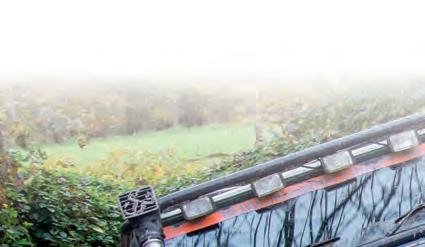

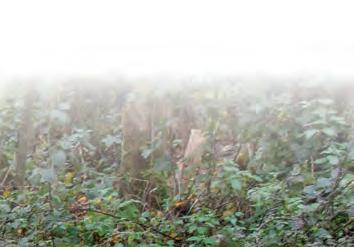
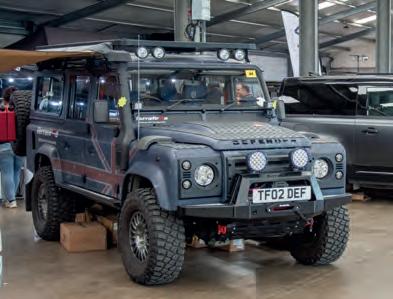













Land Rovers are returning to Bath & West this April for a weekend filled with Land Rovers!
Exhibitors old and new will join us, selling everything from parts & accessories to tyres, clothing and toys Talk to overland adventure specialists about your next trip, discuss modification options with companies with the know-how and other experienced Land Rover owners.

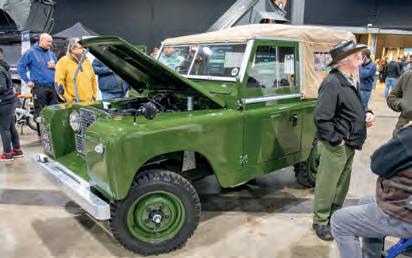



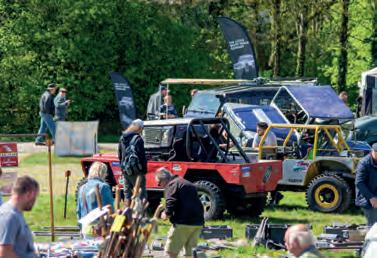
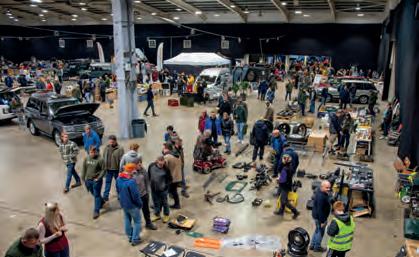

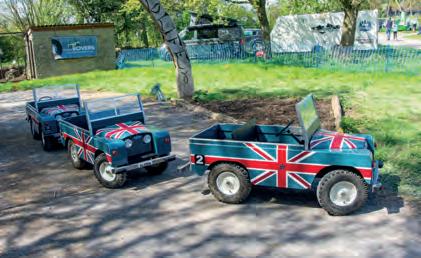





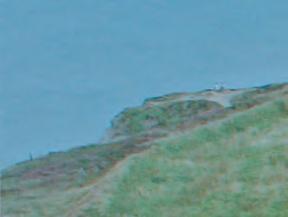

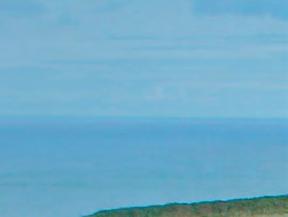

Kate and Kieran Dixon wanted a vehicle in which they could take their son to nursery and do the weekly shop – before turning heads at car shows at the weekend
Words and Pics James Webber



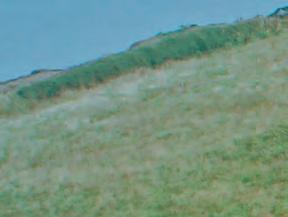










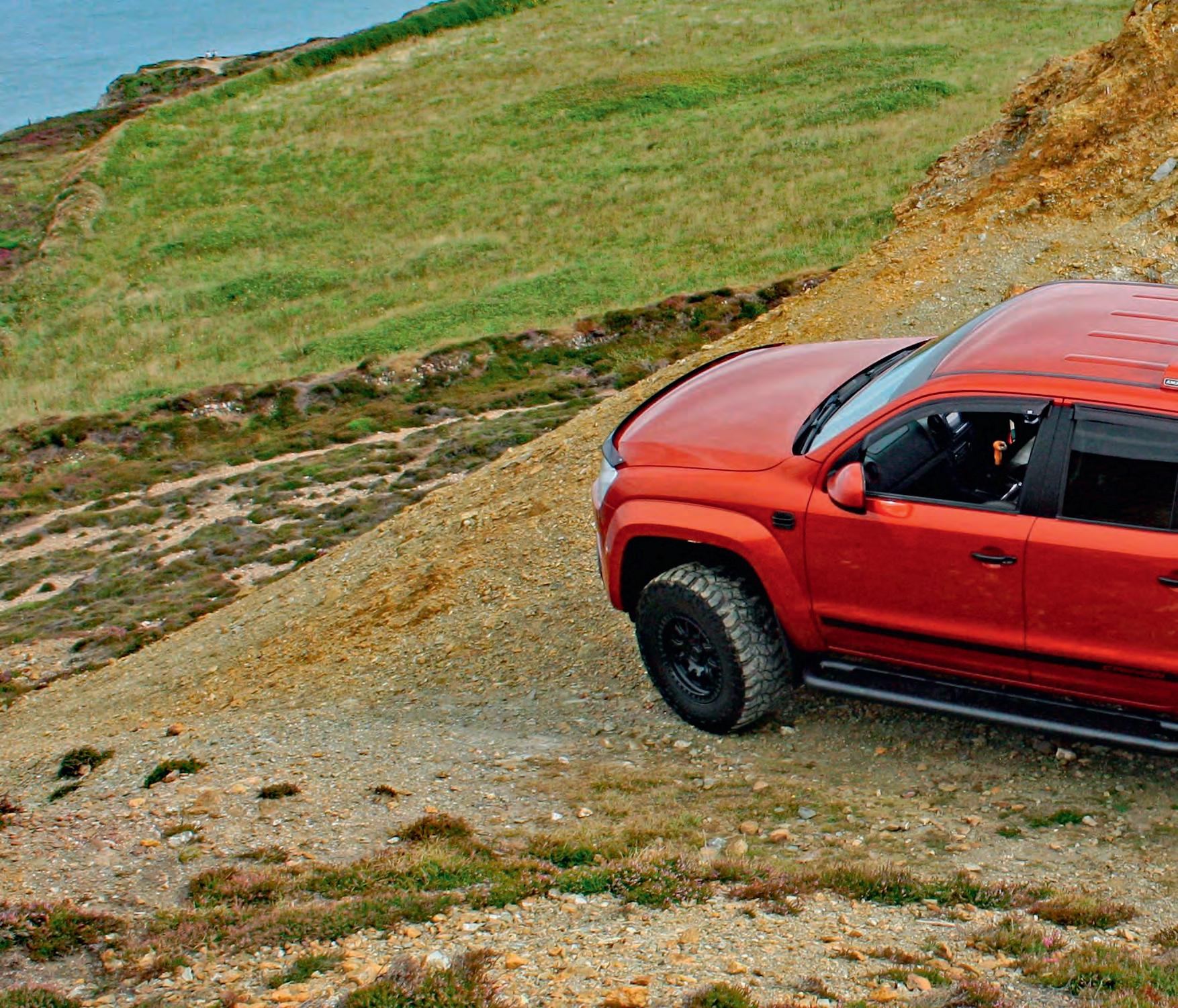
Kate Dixon and her husband Kieran are both bona fide Volkswagen lovers. Having met through both owning Polo 9Ns and attending shows together, they have amassed quite a collection over time – including a bagged Passat, a custom Mk2 Caddy build and a T5 day van, to name a few.
Cool cars are great, though, but they tend not to make great family motors. Or do
they? When Kate fell pregnant with their son, the pair decided that they needed a vehicle that ticked all boxes. It had to do the job as a daily – but they still wanted it to be modified and make heads turn wherever it goes.
‘We’d both seen this Amarok at the Gravity show a few years ago,’ Kate explains to me. ‘It did the rounds a bit and we both agreed that it had the makings of a great base vehicle.
‘We did some research into finding one. Ideally I wanted one with an auto box but then the one we’d seen at the shows came up on one of those online raffle comps, so we got a few tickets and kept our fingers crossed. It was a manual but everything else was swaying it for us.
‘Unfortunately, we didn’t win. But then while we were searching on Autotrader, there she was. Turns out the winner had
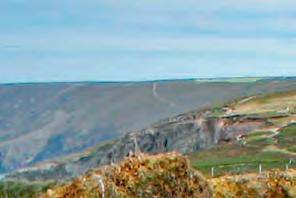



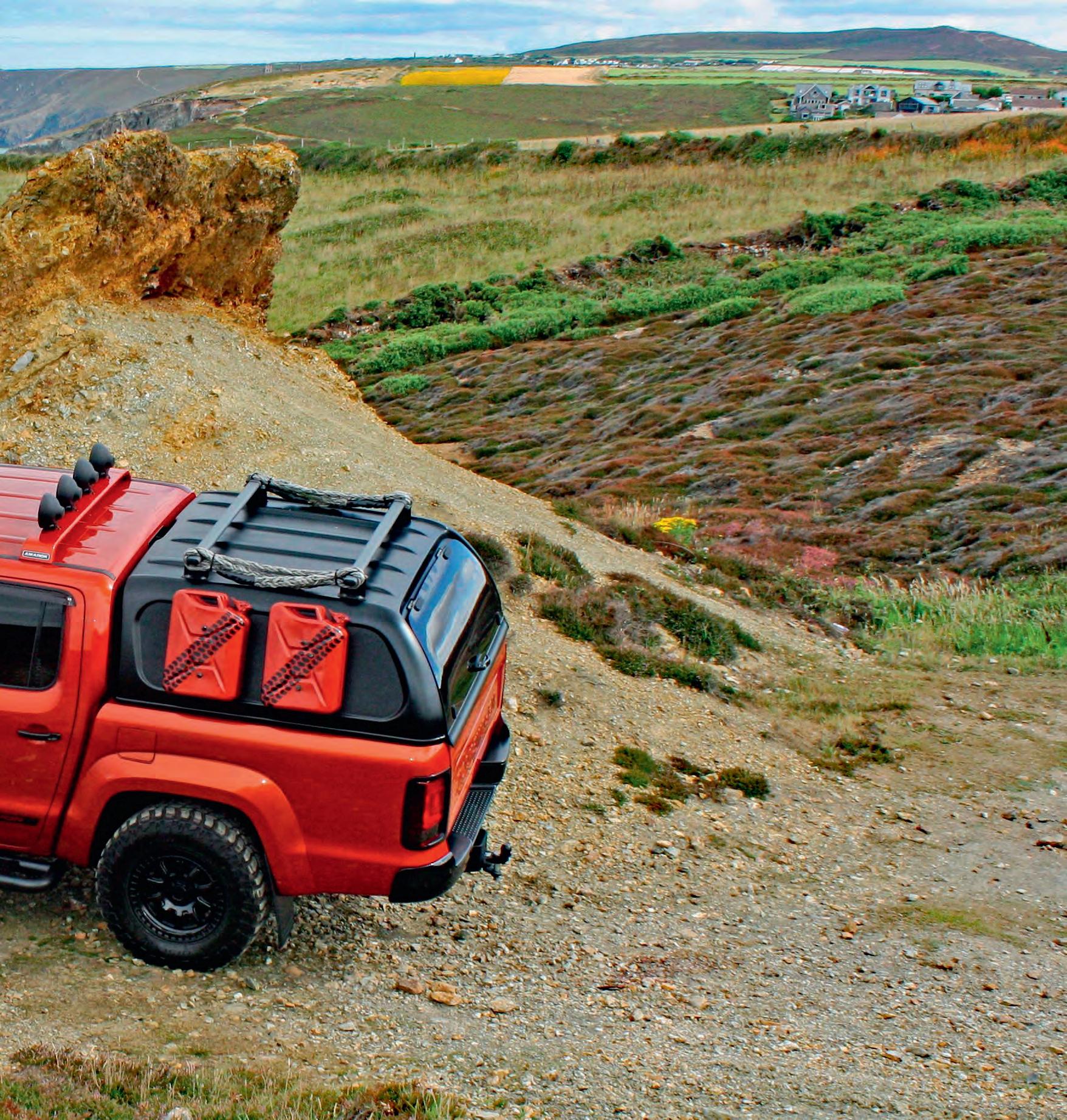
traded her in, so we jumped at the chance and purchased her.’
What Kate and Kieran purchased was not just any Amarok, though. The base model is a 2014 Canyon edition – one of only 350 made in total, one of only 50 manuals and one of only 30 in Orange. ‘The original owner had made a start on modifying it,’ says Kate. ‘When Kieran and I were discussing what we were going to do, basically the owner had


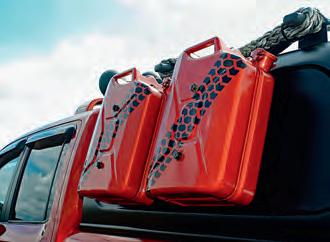
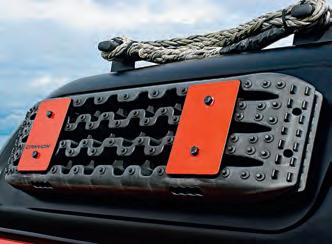
Left: It’s all about the mounting, but these tubular steel side rails look stout enough to protect the sills from unruly tree stumps
Centre: Jerry cans are a very credible thing to carry on an off-road vehicle, though you probably haven’t seen many colour-coded ones before. Kate and Kieran aren’t alone in going for this look, though – if you think about it, the optional side locker on the current Land Rover Defender is doing more or less exactly the same thing
Right: The other side of the black loadspace canopy carries a set of traction mats, which is also pretty credible in off-road circles. Rope’s a tougher one to carry off as an aesthetic add-on, but it’s certainly a novel use for a pair of roof bars
already done it. So it was a no brainer and we snapped her up.’
It should be mentioned here that Kieran takes the credit for the work and custom touches the couple have made on the truck. He’s handy, being an HGV mechanic by trade, and all the work was carried out on the driveway at home. ‘We do have a garage, where I worked on my Passat and currently my Caddy build, and it would have been nice to get the truck in,’ he says. ‘But it’s too big and doesn’t fit – so the driveway it was!”’
The first thing Kieran did was to go through the truck from front to back and make sure it was safe and sound. ‘We replaced the
roller shutter on the rear bed as every time it rained, it poured in. So we replaced it with the black canopy which houses mud mats on one side and colour coded jerry cans on the other. I removed the tailgate latch and smoothed it over, and fitted a solenoid to make releasing and opening it much easier.’
Then came the serious stuff. ‘I did a custom body lift by 40mm, a suspension lift with 50mm on the front and 25mm on the rear, and a custom diff drop. I made custom brackets to raise the rear bumper to match the extra height.’
Under the bonnet, though later versions of the Amarok got a 3.0-litre engine this one makes do with Volkswagen’s 2.0 BiTDI, which in stock form came with 180bhp and
310lbf.ft. In this case, however, the previous owner had had it remapped to a healthy 220bhp. Kieran was happy to leave it at that, but he did add a Ramair panel filter and a custom stainless exhaust – with a distinctly hot-rod touch. ‘I made it with diverters,’ he explains, to switch between using the full system with silencers or running straight through with side exits.’
That may be a trick borrowed from the world of street machines but the Amarok shows some definite off-road intent with its 285/70R17 Cooper Discoverer Pro mudterrains. These are mounted on Black Rhino rims, after Kate and Kieran were approached by Wheel Pros – who chose the Amarok on which to debut the new design. The wheels
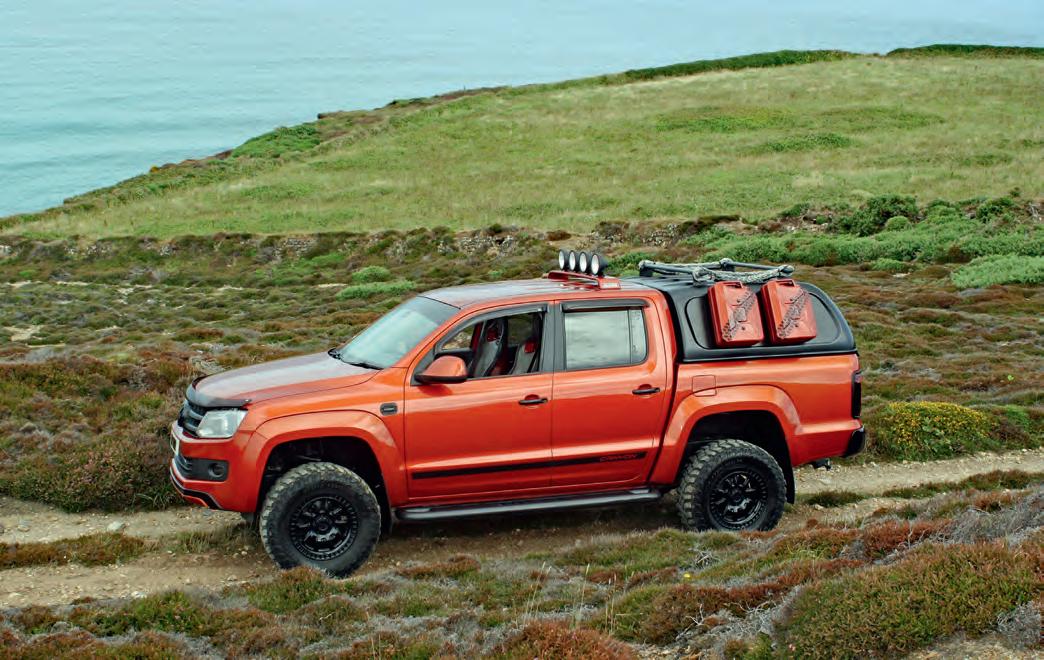
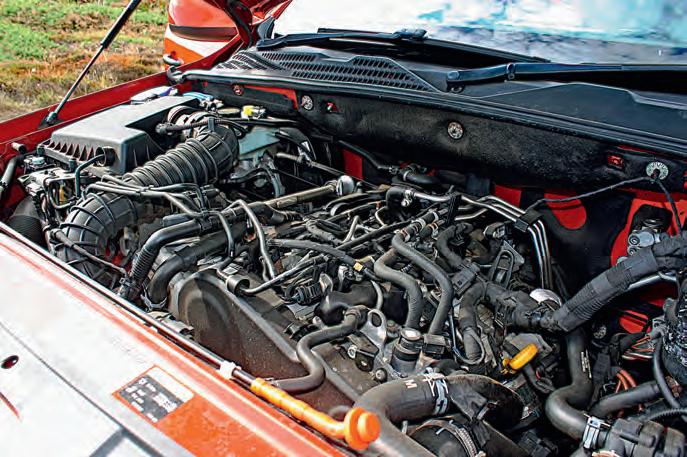
Above: Volkswagen’s 2.0 BiTDI engine has been upgraded to produce 220bhp. Kieran has added a Ramair panel filter but the dream is to hook it out for a 4.2-litre Audi V8…
Top right: Side-exit exhausts always carry an air of purpose, but Kieran took it a step further with the Amarok. He made the entire system from stainless pipe – incorporating flaps so he can switch between silenced tailpipes or the straight-through jobs you see here
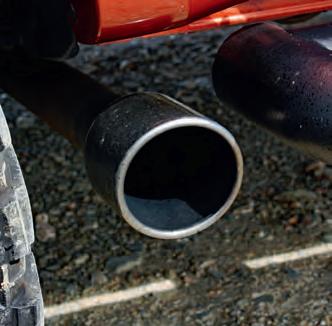
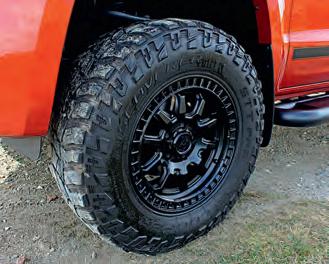
Above right: 285/70R17 Cooper Discoverer STT Pros are mounted on 10-spoke Black Rhino alloys, donated to the project by importer Wheel Pros which thought the Amarok would be the perfect vehicle on which to showcase its new design. They’re spaced out by 15mm and 20mm at the front and rear respectively
measure in at 17x8” and are mounted with custom spacers measuring 15mm and 20mm at the front and rear respectively.
Moving to the rear, in standard form the Amarok’s tailgate is a simple affair with a
circular VW badge in the middle. That’s all it needs to make most people happy but the Dixons are not most people and for them, it, would not do. ‘We both wanted something that actually spelt out the word Volkswagen,’ says Kieran. ‘I realised that the tailgate on a Mk1 Caddy did just that, so I bought one, cut a chunk out of the Amarok’s tailgate and with a lot of welding and filler I married them together. We’re both so pleased with how it


has come out – it looks factory and takes many people by surprise.’
Something else that came from the truck’s previous owner was a pair of heated
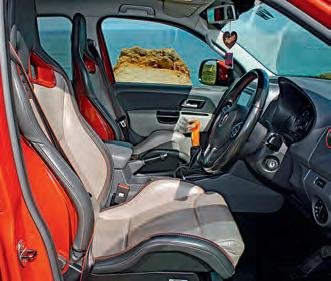

The truck had already been fitted with heated Recaro CS front seats when Kate and Kieran bought it. They’re trimmed in limited-edition two-tone leather with orange stitching, as is the original rear bench, and their hard backs have been colour coded to match the vehicle’s exterior paintwork
Above right: Custom sound system from Kenwood features upgraded speakers and a set of amps and subs behind the rear bench. The badges in the door cards help give it an OE look
with the hard backs colour coded to match the paintwork.’ The rear seat is stock and retrimmed to match.
seatbelts and steering wheel have orange piping and stitching around them. The door shuts have custom Amarok trims and, being Cornish, we had to have a Rattler Cider gear
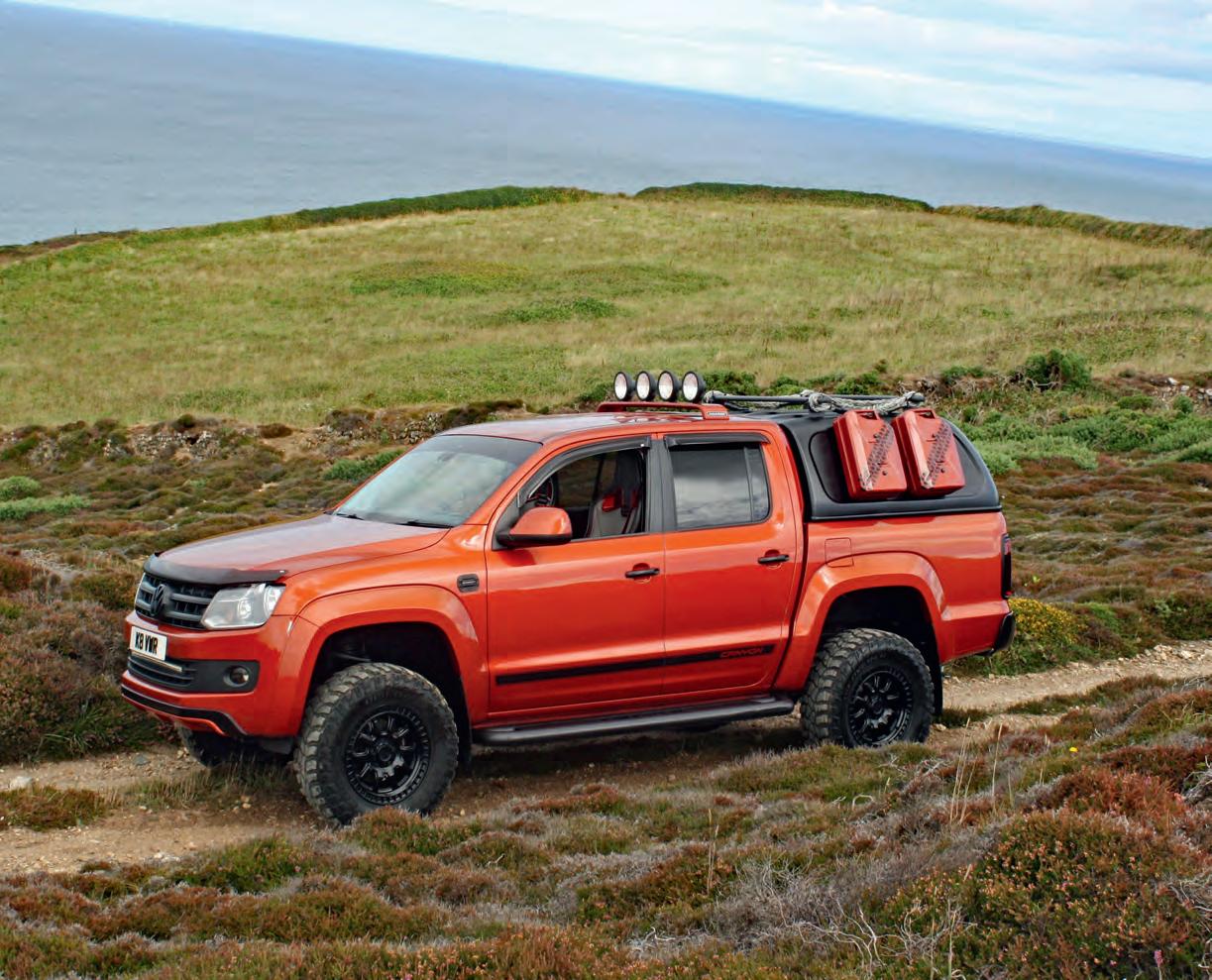
at Kenwood and worked together to create a custom sound system. All the speakers were upgraded, with amps and subs nestled away behind the rear bench. These reveal themselves when the seats is leant forward (or the stereo is switched on and the volume turned up, obviously…) To give you a clue as to what’s coming, custom Kenwood badges were made and added to the door cards, as if factory.
Kate and Kieran started the build in January 22 and finished (sort of) a couple of years later. As with any project, however, are they ever really done?
‘There’s a few things we would like to do in the future, depending on finances and circumstances’ the couple say with smiles all round. ‘Kenwood are providing us with a bass controller shortly, a few bits need respraying and we’d like to do a wide arch kit, but custom as the factory one isn’t great.
The Amarok doesn’t proclaim itself to be a Volkswagen in standard form, which is fine if you’re the Volkswagen factory but not if you’re a lifelong enthusiast. Kieran cut a section out of the tailgate and grafted in the corresponding part from a Mk1 caddy. You’d need to like welding, but you can’t argue with the results
We’d like Osram headlights, and the rear could do with a glow up too.
‘Ultimately an engine swap,’ adds Kieran. ‘Potentially an Audi 4.2 V8 would be the dream. And I’d like to up the tyres to 305s like Top Gear had when they did the Arctic challenge.’
Some very major surgery to come if that’s going to happen, but those are the dreams and for now the Dixons have the family motor they needed – and the cool truck they wanted. ‘We’re both really happy with how she is,’ says Kate. ‘Our son loves coming out in her and she is really welcomed at lots of shows up and down
the country. We’ve been fortunate enough to be asked on to Kenwood’s and Meguiars’ stands at shows and we’re talking with Ramair about some collabs at the moment.’
There are shouts for both companies – Meguiars for their all their support with cleaning products and Kenwood for the audio system – as well as ‘anyone who has helped or supported us and the friends we have made along the way.’ Which is a group that’s only going to get bigger as time goes on – much like the truck itself. And, indeed, like Kate and Kieran’s collection of cool Volkswagens. Not that many of them will ever be much cooler than this.

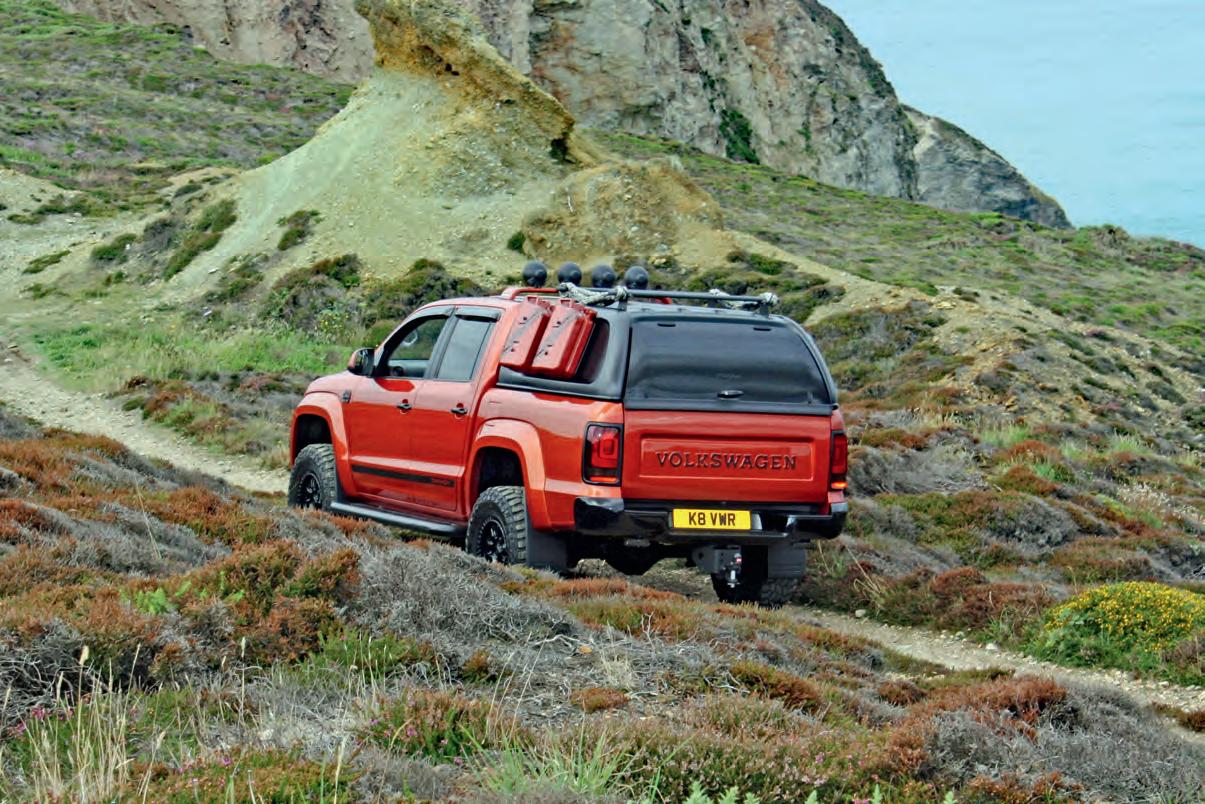
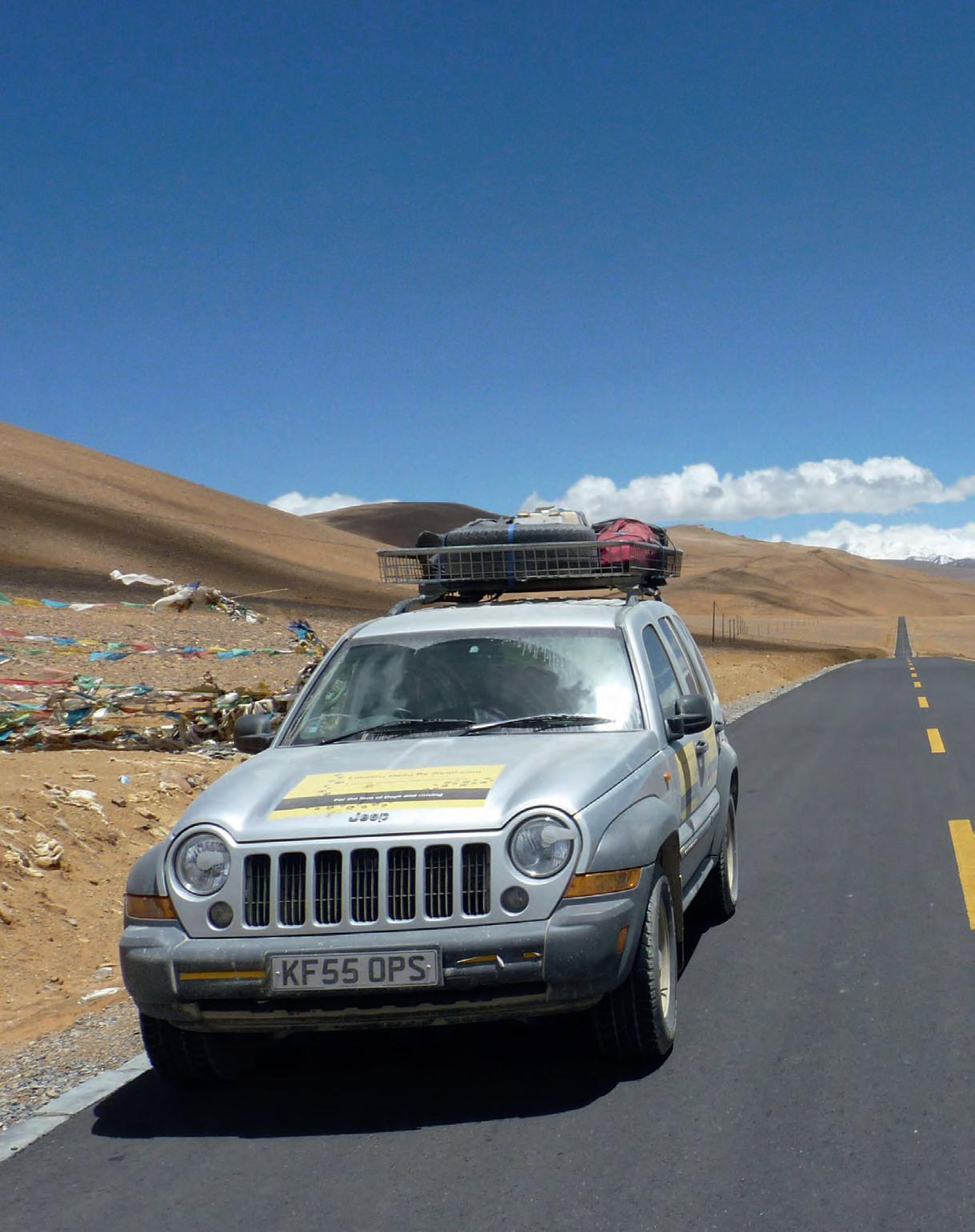



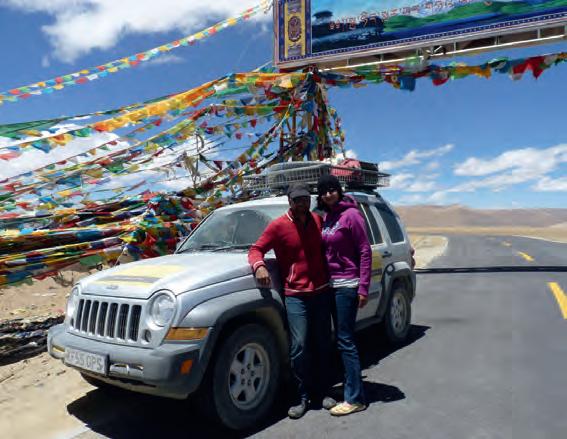



For Indian nationals living in Britain, a journey home normally means driving no further than Heathrow Airport. But when the idea of going by car turned into plans for a fully fledged expedition with the aim of raising funds for a local charity, the die was cast – for a 10,000-mile road trip through fifteen countries aboard a completely standard Jeep Cherokee
Words and pictures: Tushar and Pooja Agarwal
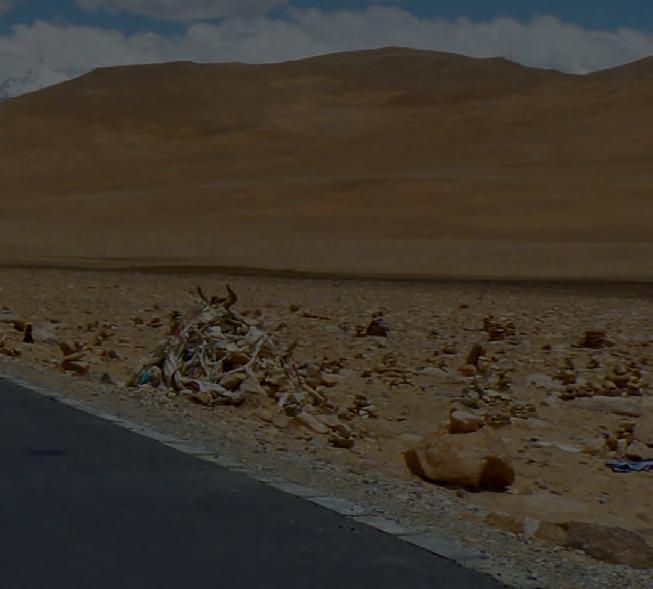
The idea of driving from London to India first came to us sometime in January 2009. Most Indians, when they visit their home country, go by plane, but we decided we fancied a challenge. We definitely got it!
We started by trying to figure out a route. The best is the classic Silk Route through Iran and Pakistan but, due to unrest between India and Pakistan, we knew this may not be practical or even possible for us. So we visited travel websites and went on forums where we discussed our options; Bing beats Google hands down for providing directions to some very remote parts of the world, we found!
The only other route we could figure out was through Russia, Kazakhstan, China, Tibet, and Nepal. This is much longer but, based on our research, is currently the only other route possible.
The route would take us through fifteen very diverse countries, which meant plenty of unique experiences. But it also meant a lot of border crossings. And we were soon to learn that dreaming of going on such a road trip is one thing, but planning and actually doing it is a completely different ball game!
We were going to need visas for almost everywhere, plus of course a carnet de passage for our vehicle. Obtained from the RAC, this is in effect a passport for your car. There are various ways of paying
for it, all of them expensive, though not as expensive as life will get if the vehicle doesn’t arrive home before the carnet expires. They normally last 6-12 months and take about a month to come through so, like your own visas, planning well in advance and being very well organised are the keys to happiness.
It won’t surprise you to hear that China and Tibet were the trickiest countries for which to get visas and permissions. We found a Chinese travel company called NAVO which specialises in obtaining the paperwork you need for driving there. They told us that in China, foreigners are not allowed to drive their own car without having an approved local guide physically present in the car with them at all times!
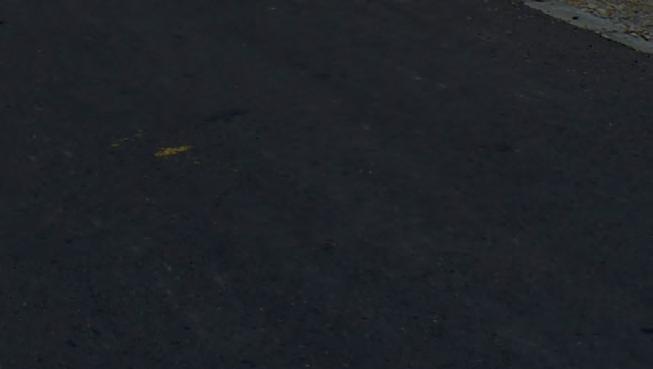
In addition to this, the drive from China to Tibet and Nepal is one of the most difficult, including the highest roads in the world. Combine this with the amount of dirt tracks we’d be encountering, not to mention steep hills and icy conditions at high altitude, and we knew that although this was to be more of a road trip than an overland expedition, we needed a sturdy 4x4 to do it in.
We considered the Suzuki Grand Vitara and Honda CR-V, but ruled out the Land Rover Freelander after reading reviews about their reliability, particularly with head gaskets (I should add that it was the old models of these vehicles that we were looking at). The Vitara was too small inside,


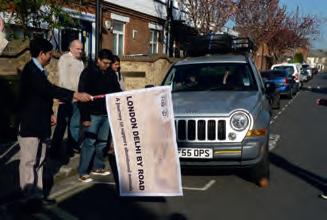
Kensal Green, London: 7.15am on day one. Note the happy, carefree expressions of people with the adventure of a lifetime ahead of them and no idea how many times they’ll get pulled over by bent cops in Ukraine
Above right: In every expedition, the moment when you set off is a big one. When you’re flagged off by the First Secretary of Community Affairs at the Indian High Commission, it’s something extra special. The coconut under the Jeep’s nearside front wheel is a nod to the pilucinchuanu, part of Hindu wedding tradition: back in the days of horse-drawn carts, if the wheels on the bride’s carriage were strong enough to break a coconut, that meant they were roadworthy
and though we liked the CR-V’s drive, they’re not really considered off-roaders.
Next on our list was a Jeep Cherokee. So off we went to try one – and instantly we
was that it also had a power point in the boot that could be used for electronic appliances like a cooker or fridge. We thought it important to consider these little things as they do come in handy later on. The car looked tough, had Jeep’s off-road
“Neither of us had any experience of fixing cars. We could change a wheel, top up the engine oil and maybe check the air filter, but that was about it”
knew that it was going to be the vehicle for our journey.
The ride was smooth, as were the steering and gearbox. The boot was big and spacious, and it came with roof rails already fitted. Something else we liked

pedigree and, we knew, was well regarded for its reliability.
Naming our Jeep Goofy, after Pooja’s dog back home in India, we spoke to various companies specialising in expedition preparation. A few were of the

opinion that a newer 4x4 such as this is a risky vehicle to take on expedition as it has so many electrical systems to go wrong, which is something we’d overlooked. But we were assured that the Cherokee shouldn’t give us any major problems… God, we certainly hoped not!
Neither of us had any experience of fixing cars. We could change a wheel, top up the engine oil and maybe check the air filter, but that was about it. So Tushar went for some basic mechanical training and came back able to look after all the other filters and fluids too. We also decided to carry a stock of spares, so that if we couldn’t fix the Jeep ourselves, at least we could present the right parts to a local mechanic.
We got some sponsorship from Stanfords, which provided all our guidebooks and maps for the journey, and

Left: Dating from 1410, the Orloj on the old town hall in Prague is the oldest working astronomical clock in the world
Above: There are various interpretations of what the girl in this statue is doing. Some say she’s making a paper plane, others an origami bird. Given that she’s sitting on top of the city library in Prague, she’s probably just reading
Above right: A Brit Jeep in Prague. Normally on expeditions you’re used to feeling uncomfortably well off in your big western 4x4, but that’s definitely the back end of a Merc CLS on the far side of the road, and a very serious Audi parked in front of what looks like it may be the world’s most expensive coffee shop
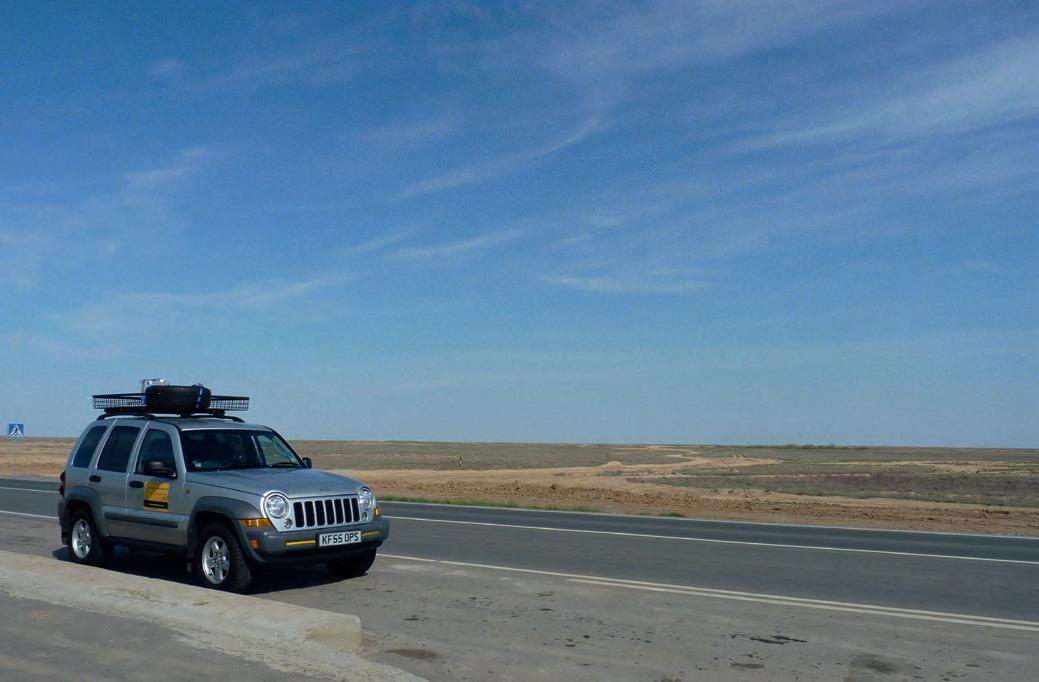
a Jeep dealer in London which offered to service the Cherokee in readiness. We also decided to raise money for a charity in India called Friendicoes, which does a fantastic job at rescuing and taking care of stray dogs and other neglected animals. And then, after a year spent planning, researching and, above all, dreaming, there were less than three weeks to go. Cue a barrage of self-doubting. Can we do it? What if the car breaks down? What if some border guard refuses to let us enter their country? What if we have a big accident? What if we fall terribly sick on the way?
We got a raft of vaccinations and packed a stock of medicines along with a large first aid kit, then decorated Goofy with reflective tape and had all her tyres (including two spares) filled with Ultraseal to help prevent mishaps of various types. We had a roof rack fitted, too, so as not to have to carry our jerry cans of fuel inside the vehicle. You can’t protect yourself against everything, but there’s no point in asking for trouble.
Those last few weeks flew by, but at last the preparations were finished and we were on our way to Mayhew Animal
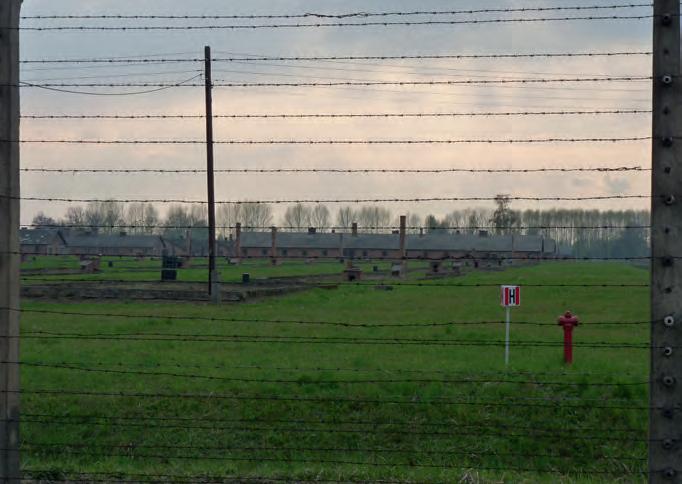
Shelter, a small animal home in London, from where we were to set off at 7.15am. Mr Jitendar Kumar, First Secretary, Community Affairs at the Indian High Commission in London, who is an animal lover himself, flagged us off, and before we knew it we were looking in our mirrors as our friends and family waved goodbye. We were on our way.
First stop, of course, was Dover. We had planned to use our GPS to get us to Frankfurt, but as soon as we landed in
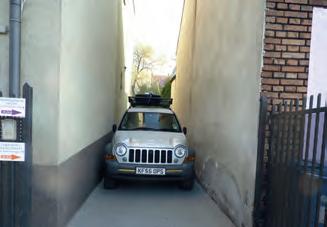
Above: This isn’t what all the car parks are like in Poland, thankfully. Getting in and out was definitely something of a skill
Left: The purpose of the trip was to raise money for a charity trying to address cruelty to animals. A pause for thought at Auschwitz is all the reminder you could ever need that there’s no room for complacency when it comes to mankind’s capacity for cruelty to anything

Above: Still looking fresh and carefree. Well, it’s only Poland…
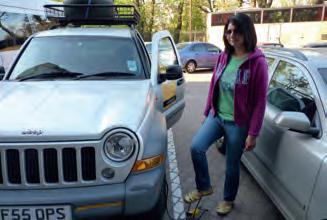
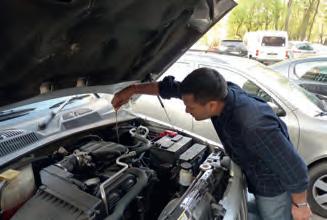
Above right: Everyday checks and maintenance in Lviv. Tushar dips while Pooja pumps; as always, Goofy responds by remaining unshakeably reliable
France it refused to work; our first small hiccup! Not knowing what to do, we kept driving in an unknown direction. In between adjusting to driving on the right and searching for the road atlas, which was stuck in a huge pile of luggage on the back seat, we somehow managed to


find the right road. As soon as we crossed the border into Belgium, the GPS sprung back to life – bizarrely, it didn’t have a map for France.
We arrived in Frankfurt at 11.30pm after a long and tiring first day, then it was more of the same en route to Prague.
After around 500km of being overtaken at ridiculous speeds on the German autobahn, we crossed into the Czech Republic and finally saw a police car. Not only did we see it, in fact, we got pulled over by it, and fined for not having our headlamps on in the day. It should have

Top left: The first thing you see after crossing into Ukraine is a road sign which leaves you in no doubt that you’re getting further away from home. At least thus far the signs are still bi-lingual; this, and a frustratingly self-interested approach to traffic policing, are probably the only two similarities the country has to Wales
Above left: The Museum of the Great Patriotic War in Kiev commemorates the USSR’s resistance against Hitler’s forces in suitably patriotic terms. As you can see here, though, the Ukrainians aren’t too wrapped up in the solemnity of the subject to prevent the march of time from bringing out the absurdity of it all
Above right: St Michael’s Monastery was demolished during the Soviet era. What stands today is a reconstruction which only began after Ukraine regained independence in 1991 and opened to the public in 1999




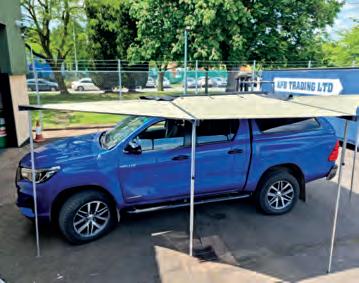
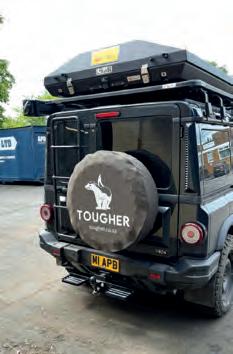
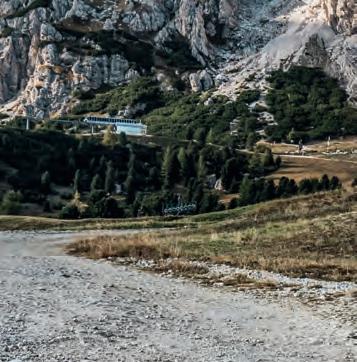





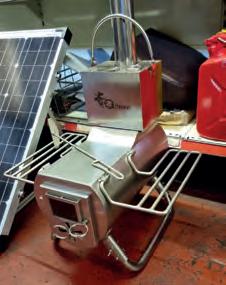

• Escape Gear
• ...and many more!


• Aluminium canopies
• Roof tents and roof racks



• Off-road fridges and 12v gear
• Drawer systems and slides




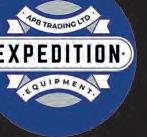





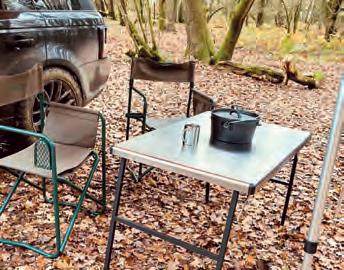




• Bumpers, side steps and vehicle protection
• Campsite essentials, tables and chairs




















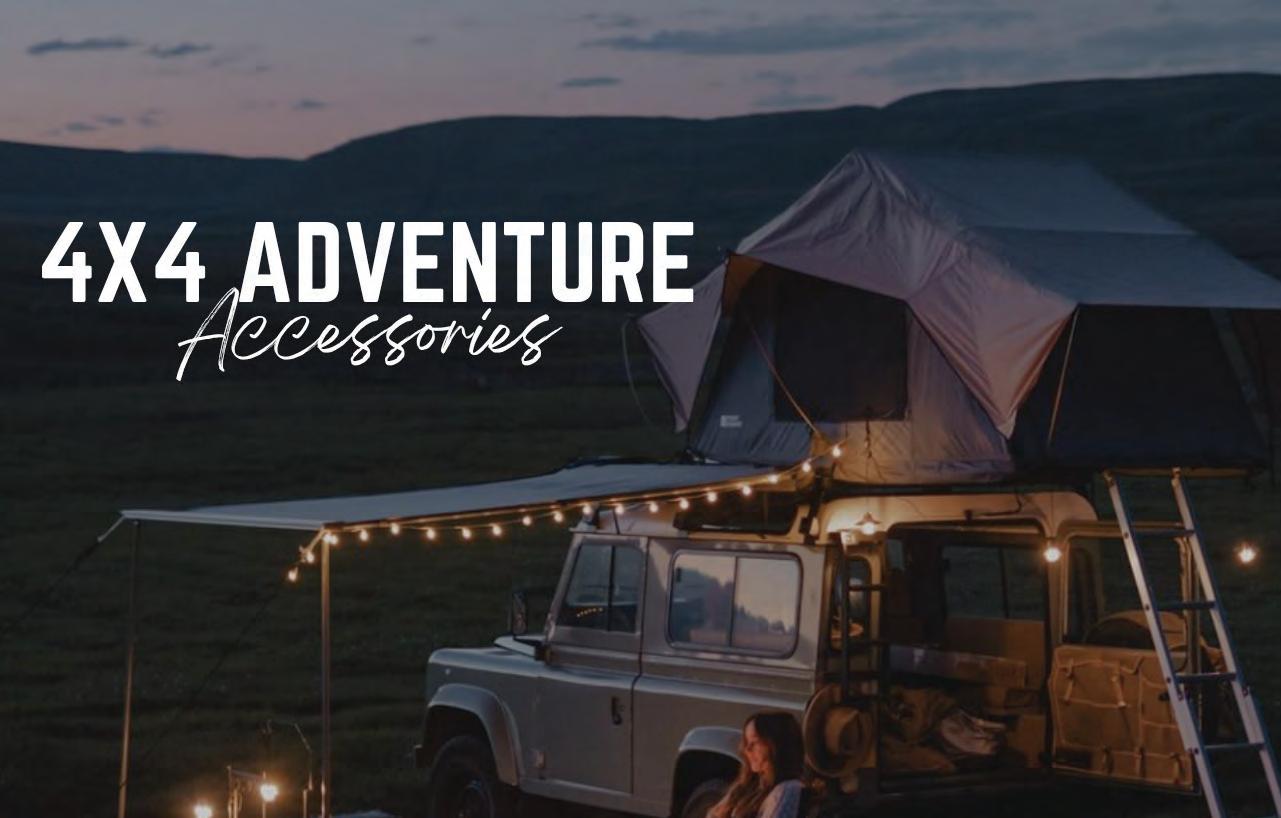









Equip your 4x4 for every journey with Exmoor Trim’s premium adventure accessories. From rugged travel gear, bags, storage and accessories to YETI and OZZ Lights — discover a wide range of products built for all 4x4s, not just Land Rovers.
Scan to shop and explore the full range today. Exmoor Trim – Crafted for the Journey.
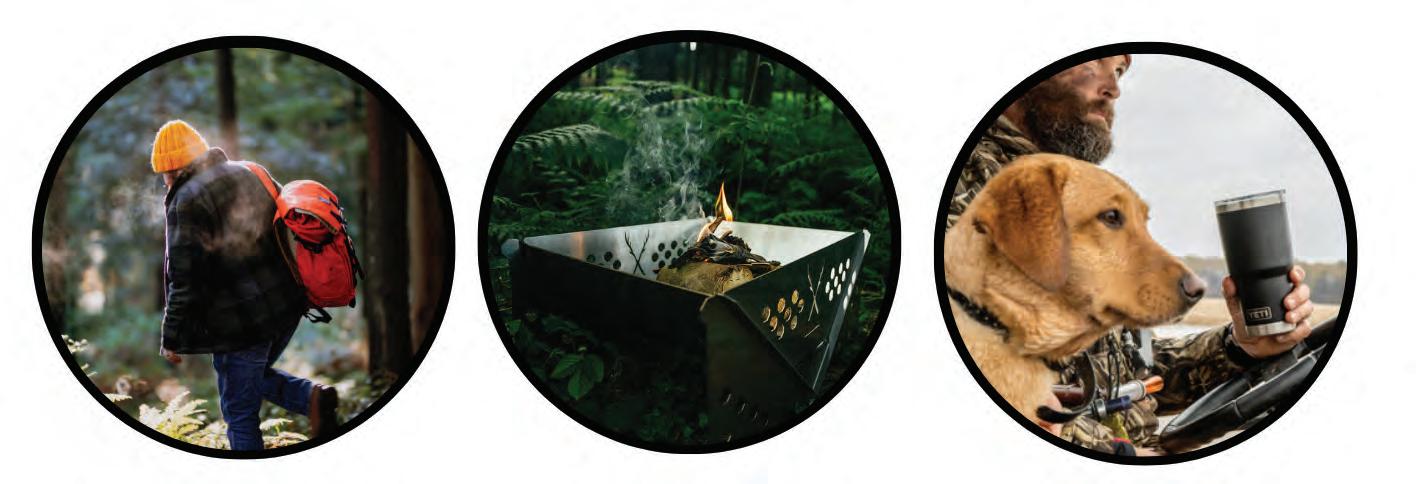





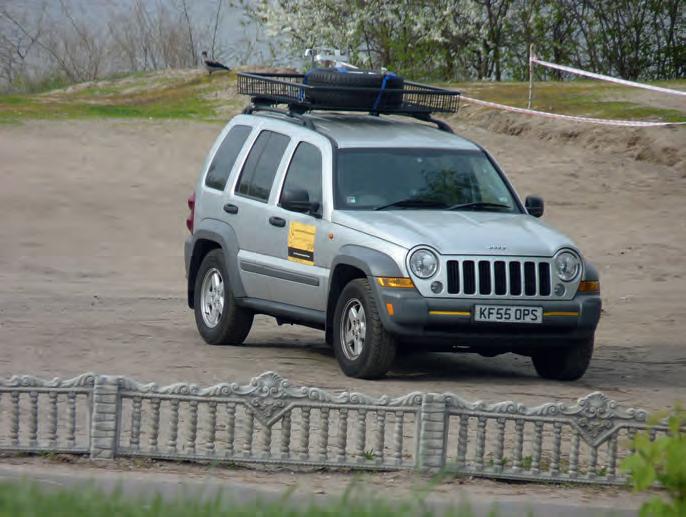
By an extraordinary coincidence, Tushar and Pooja arrived in Kiev just in time for the city’s annual convention of
Left: A lot of the Soviet-era statues in Ukraine were torn down in the years following independence. This colossal monument to the Bolsheik revolutionary Artem (Fedor Sergeev) in Sviatohirsk was the work of acclaimed Ukrainian sculptor Ivan Kavaleridze, and for that reason it was spared; by a gruesome twist of historical fate, since Tushar and Pooja travelled through the country the statue has been damaged by gunfire and mortar rounds during the city’s capture by and subsequent liberation from the Russian invaders
Right: Splendid isolation in a car park near Kharkiv. Note the empty jerry can cradle: however welcome the good guys make you feel, you always need to remember that your most valuable possessions need locking away from the attentions of the other lot
been 250 Euros, apparently, but the cop accepted $20…
We stopped on the way through Poland to visit the concentration camps at Auschwitz, which is as sombre an experience as a person can have. As with
any genuine travel experience, our trip was about learning, absorbing the world and making our lives more meaningful: to appreciate what we have today, it’s important to understand the hardships others have been through in the past.

In Poland, we had covered 10% of our total journey. In terms of distance, at least. We checked the Jeep over and it was in great shape – but of course it was only now that the real test was about to start!
Leaving Poland meant leaving the EU –and experiencing our first proper frontier crossing. Ukraine was on the other side of passport control – but passport control was on the other side of several hundred queuing trucks. This was, of course, before the current war started.
Thankfully, there turned out to be a separate queue for cars. And when we got to the front, it was anything but boring. We had to open the bonnet so the border guard could match the VIN number on our documents with the plate on the engine. Then he went off with our documents and after a 20-minute wait came back and let us through.
Roadside services on the way to Volgograd in Russia. Not being able to understand a cyrillic road sign is never good, but when it has a triple exclamation mark in it, that’s borderline scary…
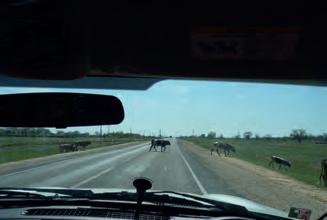


That, we thought, wasn’t so bad. But little did we know that this was just an initial screening…
Further on, an officer asked us to open all our doors and questioned us about what we were carrying. Once he was
be some problem. Somehow, the officer overheard us, and either she understood Hindi or got this a lot: ‘no no, no problem!’ Finally, the sound of clearance stamps on our passports was like music to our ears. It had taken us five hours to drive to the
“At the border with Kazakstan, they insisted on X-raying all our bags – but the ony officer who could work the machine didn’t turn up for two hours!”
satisfied, he directed us to a passport control window where another officer checked our passports (many times) with a magnifying glass! Then she consulted her colleagues, including the same officer who had checked our car. After standing at her window for at least half an hour, we whispered to each other that there must

border and two hours to get across it… and we still hadn’t had lunch. But what we had done was make it into Ukraine.
The change in the roads was immediately obvious. No markings, potholes, broken tarmac. We took the E40 to Kiev, a distance
of around 500km; some sections were good, but there was also a lot of patchwork surfacing where the tarmac was all different colours and, making it less than relaxing in our heavily laden Jeep, levels.
To be honest, when we were planning our route Ukraine was nothing more than another country on the world map for us. But having spent time there, we were very glad to have visited it. It’s a lovely country; its sights and its people make it well worth dwelling here rather than just hurrying on through. We’d been nervous about it, but a little effort goes a long way: the people are very nice and willing to help, so a phrase book and a smile is all that’s needed. We met a local chap, Dima, who told us all sorts of interesting things about his country and even came with us to the Russian border to help us on our way.
Again, what a difference a few years make. Looking back, it’s hard to believe that crossing from Ukraine into Russia was
Left: The Motherland Calls statue in Volgograd commemorates the battle for the city in WWII, when it was known as Stalingrad. It contains 7900 tonnes of concrete; when it was completed in 1967, it was the tallest statue in the world
Below: Ruined during the ferocious battle for Stalingrad as German forces sought to overrun Soviet Russia, this old flour mill has been preserved as a monument in exactly the state it was left in when the guns fell silent

a thing we could do at all. We’re sure that given the chance, and if he’s been spared in all the carnage, Dima would still be every bit as friendly, kind and willing to help.
Our memories of Ukraine won’t be entirely positive, though, thanks to the country’s traffic cops. We’d heard bad things about them while planning the trip, and it was all true. They are omnipresent. If you are driving on the highway, you will be stopped. Whether you have done something wrong or not, that does not matter. We were stopped three times and ‘fined’ twice. We still don’t know what for.
So we were happy to cross into Russia for what was a relatively short hop
across the narrow neck of land between the Black Sea and Caspian Sea. We paused in Volgograd (the city that used to be Stalingrad) before carrying on to Astrakhan, a sweet little town where the people were very friendly.
Beyond here lay the border between Russia and Kazakhstan – and the frontier between Europe and Asia. With that, the first leg of our trip was done. We had travelled around three thousand miles, about a third of our total distance, but this had been the easy bit. From here on, GPS coverage was about to run out. It was going to be us, Goofy and a set of road maps. In Russian.
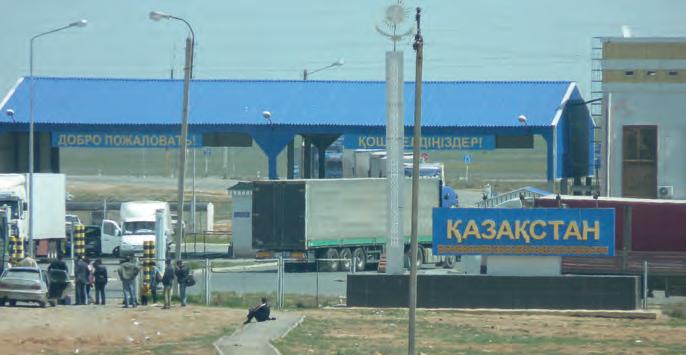
It took us five hours to clear the border, two to get out of Russia and three to get into Kazakhstan. This wasn’t helped by them insisting on X-raying all our bags –but there only being one officer who could work the X-ray machine, who didn’t turn up for two hours!
At last, though, our papers were stamped, our Jeep was approved and our bags were all packed up again. We bade Europe farewell, pulled out of the border compound and set off… into the unknown.
Next month: Deserted plains and austere mountains on the route through Kazakhstan, Uzbekistan and Kyrgyzstan
It might look chaotic, but the frontier between Russia and Kazakhstan does a very efficient job… of keeping you detained for five hours. Plenty of time, then, to dwell on the fact that this is the point where things stop making sense. Beyond here lies only the unknown…
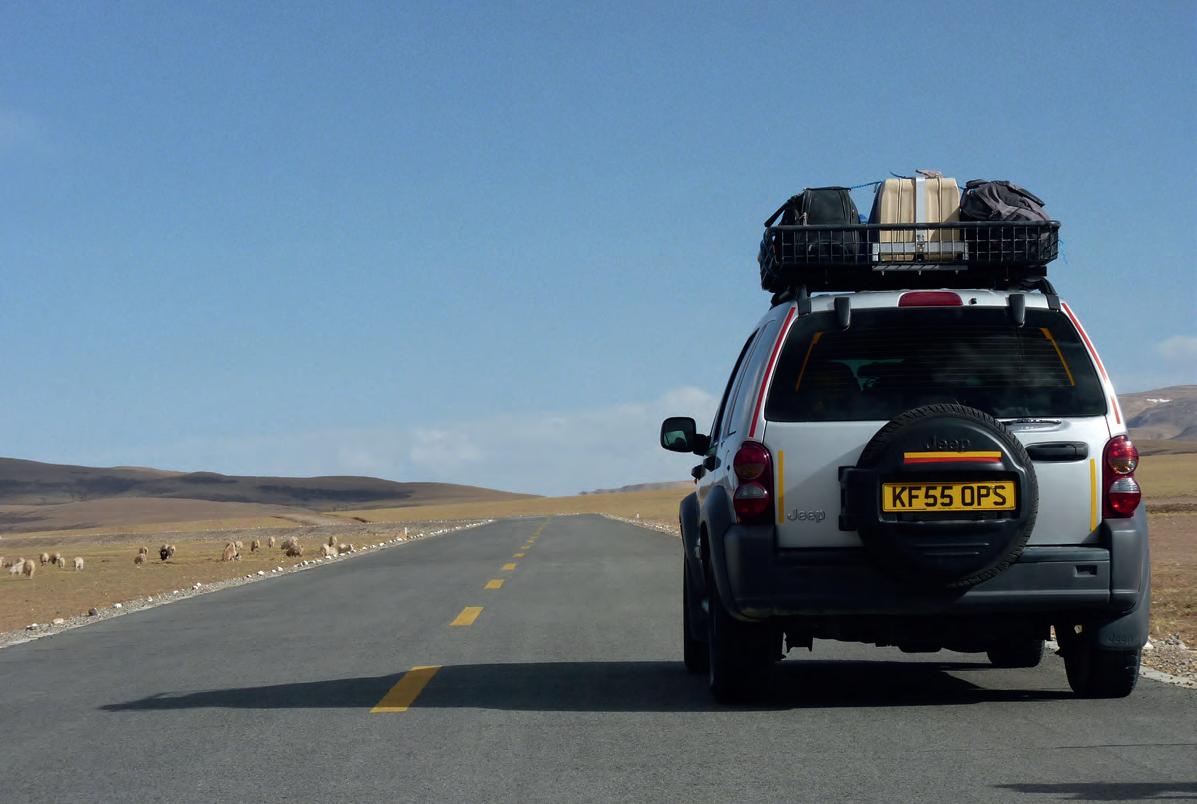









This monster of a route combines the quaintness of the North York Moors at their most touristy with a moorland landscape that’s wide open and at times seriously bleak. It takes in a variety of fords, several lengthy road liaisons and any number of beautiful villages, and most of the rights of way you’ll encounter are smooth, firm and suitable for any 4x4. It’s rutted in places, though, and you’ll cross a number of fords which need to be treated with the utmost respect when the water level in them is high.

ROUTE GUIDE
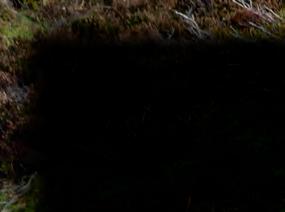
START Goathland (NZ 834 012)
FINISH Hutton le Hole (NZ 704 899)
HOW LONG? 61.8 miles / 6-7 hours
TERRAIN Farmland and open moors
HAZARDS Walkers, cyclists and horse riders; Cars and motorbikes going at insane speeds; Isolation on the moors; Fords can be very dangerous when in spate
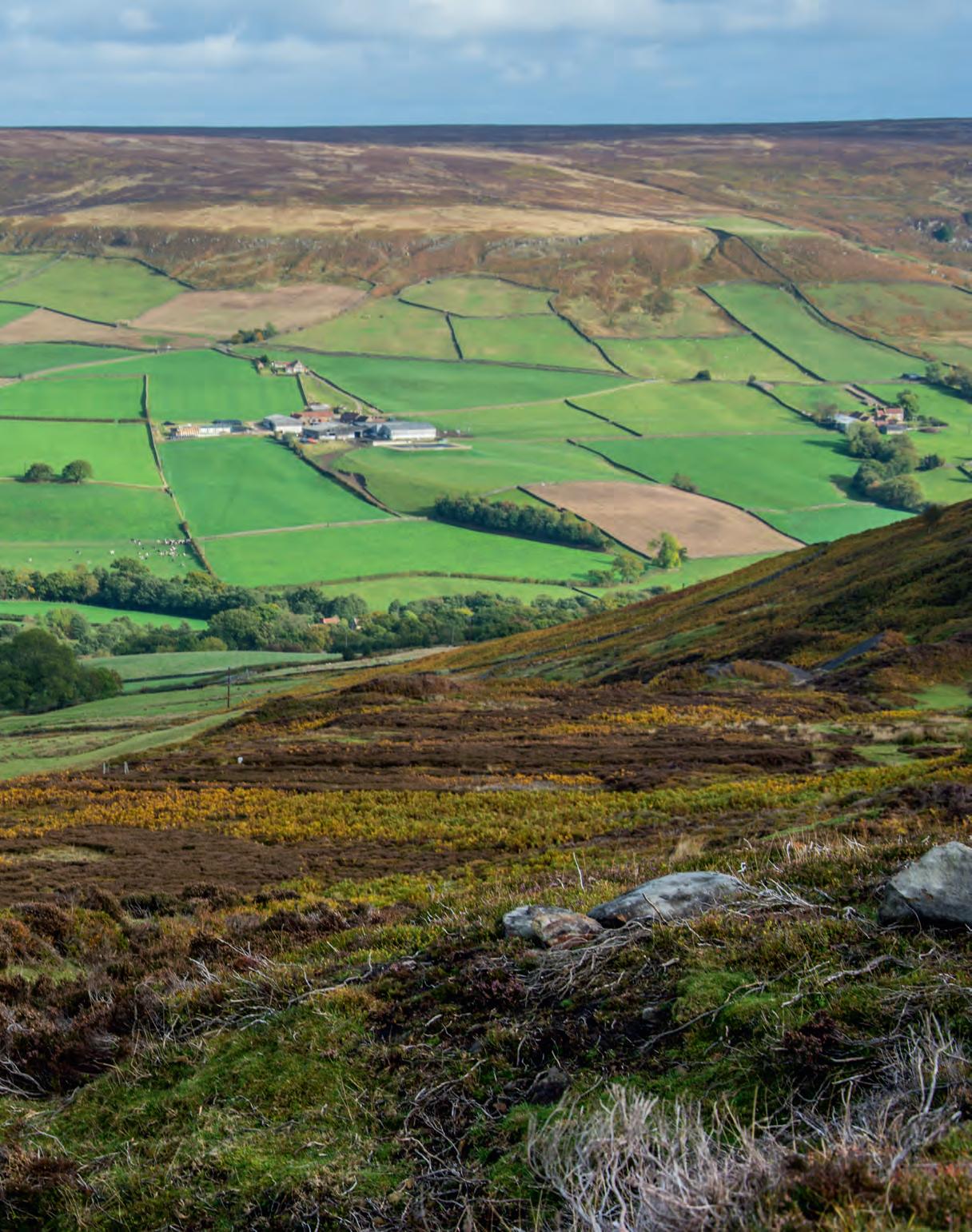


OS MAPS Landranger 93 (Middlesbrough)
Landranger 94 (Whitby and Esk Dale)


TYRES Ideally needs a high-profile size
WEATHER Deep snow would be a problem. Avoid when foggy
LOW BOX Essential
SOFT- ROADERS Not suitable

SCRATCHING
Moderate localised risk
DRIVING Some ruts and rocky bits; Good navigation necessary
DAMAGE

Sills and underbody areas at risk in ruts and occasional rocks






Step 1: Goathland is ridiculously popular with tourists, and the whole place is covered in yellow lines. If you’ve stayed at the Goathland Hotel, zero your trip as you turn right out of the car park: if not, just reset it as you drive past




1 0.0
2 1.75
NZ 834 012
Start at the Goathland Hotel, on the main road (everything’s relative) that runs through the village of Goathland. Zero your trip as you turn right out of the pub car park, or with the pub to your right (there’s double yellows everywhere, so don’t expect to park up for this) and set off east to start the route
NZ 851 028
Turn right on the track opposite the road on the left for Green End and Beck Hole
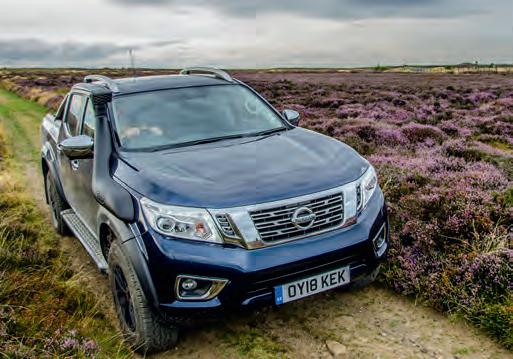
4 2.4
3 1.95
Extreme caution here. This is a fast, busy road, and you’re turning at a long straight section – so watch out for overtaking traffic coming towards you at warp speed on the wrong side of the road. In addition, there’s a sharp step up on to the road itself, and it’s a tight turn so you’ll need to swing wide
5 2.8
It’s your right of way, but the bloke coming from the right might not care. And he’ll probably be driving either a tractor or an HGV…
6 4.35
NZ 828 033
The road is signed as being unsuitable for motors. There’s also an old wooden road sign that’s no longer readable.
Further down this road, you’re going to cross three fords. They’re normally no problem, but if the river is in spate they will be very dangerous indeed


Step 8-9: As you pass through Grosmont, you’re likely to be held up by a level crossing… and given a close-up view of a steam train pulling out of the station on the North York Moors Railway
The three fords come in quick succession; each is bigger than the last. If the water level is high and/or it’s fast flowing, turn round – they’re normally drivable in anything, but they’re also capable of washing anything away 7 5.65
Our roadbooks guide you through the countryside on a mixture of surfaced and unsurfaced roads.The tracks we use are public rights of way, either Byways Open to All Traffic or Unclassified County Roads, all commonly referred to as green lanes.
We’ve made it as easy as possible to follow the route, using a mixture of instructions, tulip diagrams and grid references.We normally only include junctions at which you have to make a turning or don’t have right of way, so just stay on the main road or take the most straight-ahead option unless we tell you otherwise.
If you’re unfamiliar with six-figure grid references, you’ll find a guide to using them on the legend of any OS map. Our aim is for you to be able to do the route without maps, but we do recommend having them.
This is in Grosmont; the level crossing just after you turn is at one end of the North York Moors Railway, and is never less than busy ZERO TRIP 8 5.75 9 0.3 10 0.95 11 1.9
The notes on the first page of the roadbook advise you of how suitable it is for your vehicle.These are just guidelines, however.We’ll warn you of any hazards or difficult sections, but the nature of any green lane can change quickly.Wet weather can make a huge difference to the conditions underfoot, and what’s wide open in winter can be tightly enclosed and scratchy in summer. The responsibility is yours! Our roadbooks are designed to be safe to drive in a solo vehicle, and are largely suitable for standard 4x4s on road tyres. We do recommend travelling in tandem wherever possible, however.The risk of getting stuck can be greater than it appears – and if you break down, having help at hand can make the difference between it being inconvenient and downright dangerous.
Irresponsible driving is a massive problem on green lanes. In particular, you must always stay on the right of way. Never drive off it to ‘play’ on the verges or surrounding land, even if you can see that someone else has; doing so is illegal and can be tremendously damaging, both to the land and to 4x4 drivers’ reputation.
The fact that you can see where it’s happened shows how much harm it does. It’s no excuse to say you’re just following where another driver has already been. Most green laners film anyone they see driving like this and pass the evidence to the police.
Elsewhere, common sense and courtesy should be your watchword.
The do-and-don’t list below should always be in your mind, but keep your speed down, be ready to pull over for others and show the world that 4x4 drivers are their friends.
Anti-4x4 bigotry does exist, but it’s less common than you’d think. By and large, it’s limited to those who just want it all to themselves.
These organisations are beyond being reasoned with, but it’s rare to encounter real hostility even from their rank-and-file members. If you’re friendly towards the people with whom you share the countryside, the vast majority will respond in kind. There are always bad apples, but no more so than anywhere else.
Likewise, most local residents will accept your presence if you’re driving sensibly.What suspicion you do encounter is likely to be from farmers worried that you’re there to steal from them, so be ready to offer a word of reassurance. Once satisfied that you’re not after their quad bikes, their mood will lighten.
It only takes one vandal to tarnish a person’s view of all 4x4 drivers, and once the damage is done it tends to be permanent. But if enough of us resolve to be ambassadors, it might make a difference to the way we’re perceived by society in general.
• Keep your speed right down
• Pull over to let walkers, bikers and horse riders pass
• Don’t go in large convoys: split into small groups to avoid hassling others
• Leave gates as you found them
• Don’t drop litter. Do carry a bin bag and a pair of stout gloves so you can pick up other people’s, though
• Don’t go back to drive the fun bits, such as mud or fords, again
• Scrupulously obey all closure and voluntary restraint notices
• Don’t cause a noise nuisance, particularly after dark
• Ensure you have a right to be there.We research our roadbooks very carefully, but the status of any route can change without notice
• Be prepared to turn back if the route is blocked, even illegally
• If you find an illegal obstruction, notify the local authority
• If someone challenges you, be firm but polite. Stay calm and don’t let them turn it into a fight
• Stick absolutely scrupulously to the right of way
• You have as much of a right to be there as everyone else. And they have as much right as you!
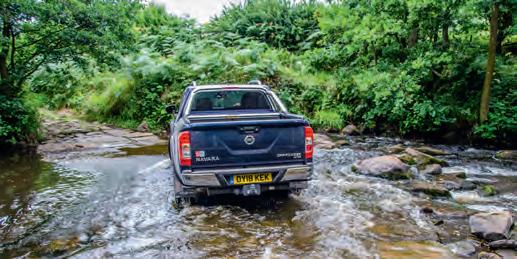








6.55
Seriously, isn’t this a nice enough lane without going off-piste and wrecking the woodlands alongside it? If you see someone at it here, shop them to the law. They’re no friends of yours
Caution – there’s a sharp lip into deep water on the left hand side of the ford. Tragically, three green laners were killed here a couple of years ago when their vehicle was swept away – a stark reminder of how powerful a small river can be when it’s in spate
773 088
The turning is impossible to spot until you’re on it. Look for the cycleway sign opposite it on the right. Swing wide and don’t cut the corner, unless you like falling in ditches
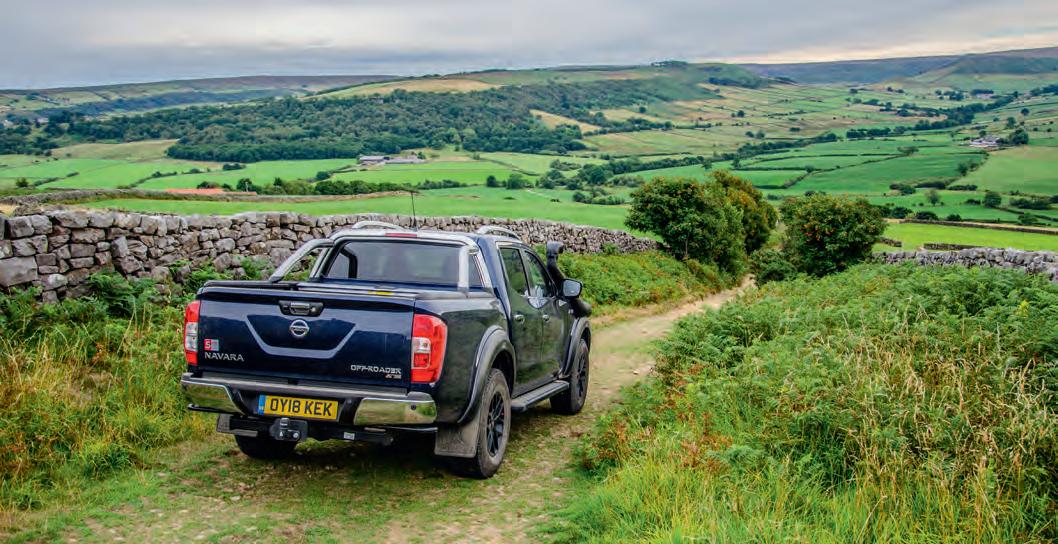
NZ 713 115
Holes in the surface of this lane have been extensively repaired using hardcore, creating a series of ‘brickcrawls’. These have started to bed in, but you might still find yourself bumping around on them
The moorland alongside the right of way has been badly damaged by illegal off-roading halfway along the lane. Again, if you see people wrecking the landscape, and the reputation of 4x4 drivers more responsible than themselves, do whatever you safely and legally can to make them pay for it
Follow ahead on the road signed for Commondale
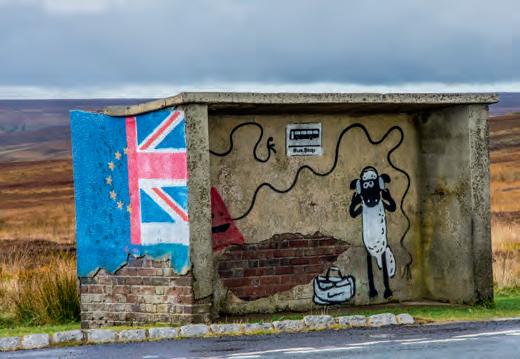

8.7
The climb gets steeper after the gate. Over the next half a mile or so, a great deal of repair work has been done to turn what was a series of washouts and rock crawls into a smooth gravel road; it should be a doddle to drive, but watch out for any areas where the ground may be starting to get rough again 46 9.1 Look out for walkers, cyclists or horse riders as you cross what is, would you believe, the track of an old industrial railway










This is just a small crossroads with another track. There’s a grouse butt ahead of you to the right here. We’ve only included it to help avoid confusion with the junction at the next
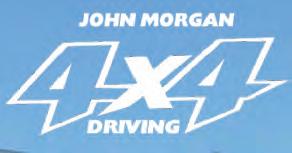



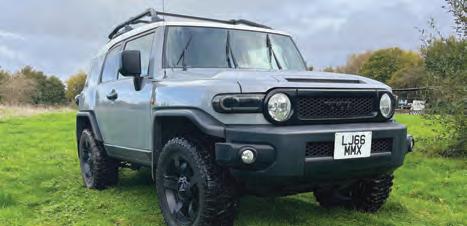
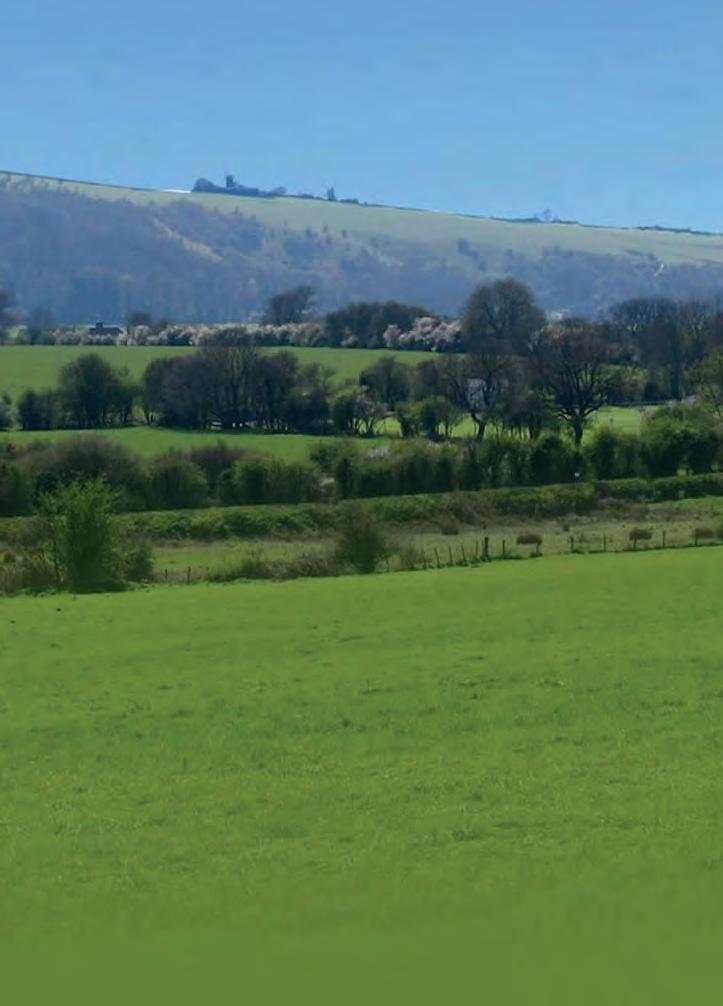



e-mail: info@cambrianway.com www.cambrianway.com
Family run guest house and self catering cottages with spectacular views, en-suite bedrooms, comfortable lounge bar and excellent home cooked food. Pressure washer, drying room, map room with local lanes marked, on-site 4x4 course, guides and GPS hire available.
A very popular venue for both individuals and groups of 4x4 enthusiasts Cynghordy Llandovery Carmarthenshire, SA20 0NB Tel: 01550 750274

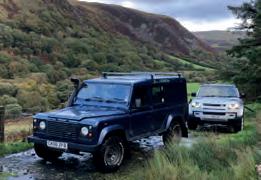










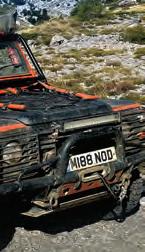

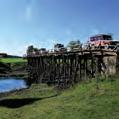


info@4x4adventuretours.co.uk www.4x4adventuretours.co.uk @4x4AdventureOverland 4x4adventuretours












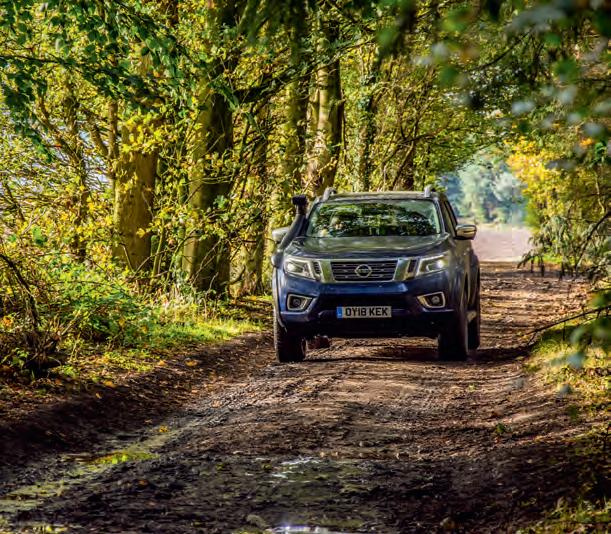


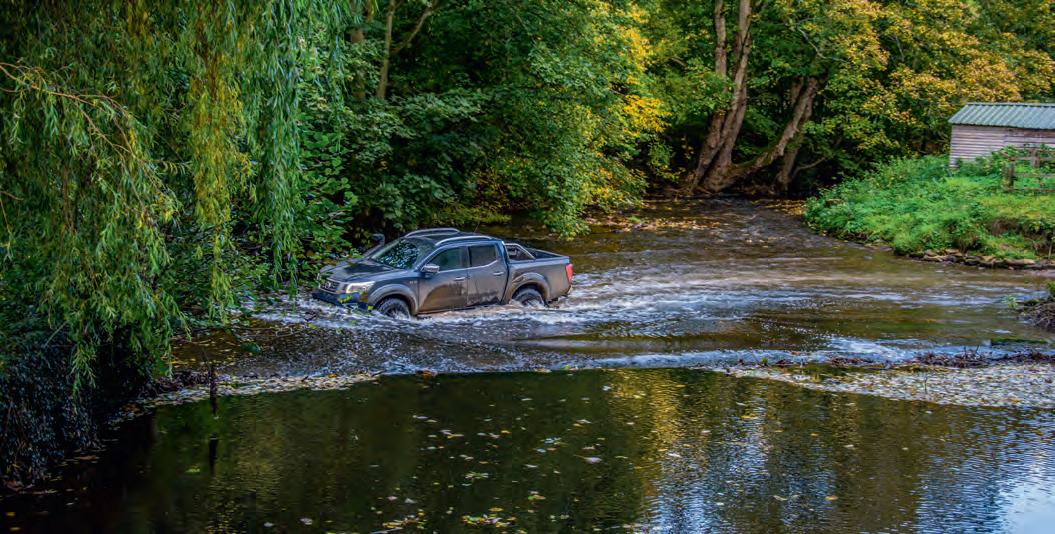












The Jeep Wrangler has long since become a big-budget off-road option. But the basic old-school TJ can still show the modern stuff a thing or two…













American V8 power for a 1993 Land Cruiser
JANUARY 2026
Defender 90 rebuilt for true indestructability
Britain’s best lanes on an epic Mid-Wales roadbook




























